

The Joy of a Phone-Free School: How Our Students Thrive Without Screens
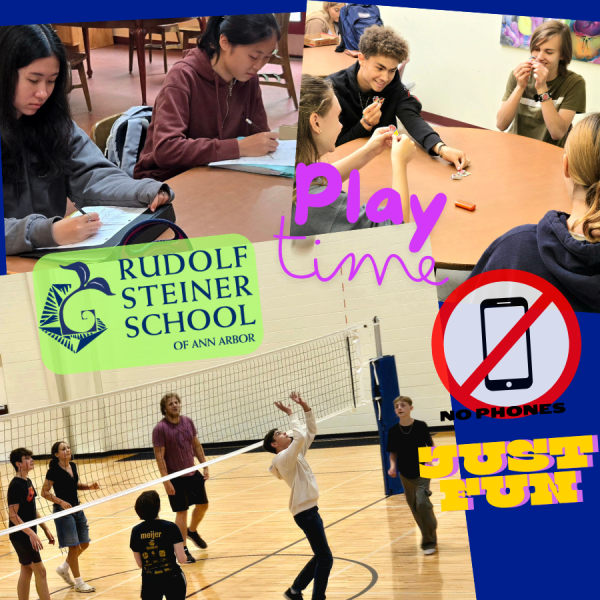
The Joy of a Phone-Free School: How Our Students Thrive Without Screens
Imagine a typical school day where students, between classes and during breaks, are glued to their smartphones—scrolling through social media, playing games, or texting. Conversations are sparse, eye contact is minimal, and the vibrant energy of youthful interaction seems subdued. Now, contrast this with a school environment where smartphones are set aside: students engage in lively face-to-face discussions, participate in spontaneous games, and immerse themselves fully in classroom activities without the constant pull of notifications. This is the reality we’ve cultivated at Rudolf Steiner School of Ann Arbor, embracing a phone-free policy that fosters genuine connections and holistic development.
The Deeper Engagement of Phone-Free Education
At our school, we’ve observed that removing smartphones from the school day does more than just eliminate distractions—it rekindles a deeper, more meaningful engagement among students. Freed from screens, students rediscover the joy of direct communication, collaborative problem-solving, and hands-on learning. This environment aligns seamlessly with the principles of Waldorf education, emphasizing experiential learning and nurturing the whole child.
We Are Phone-Free, Not Tech-Free
While our school maintains a phone-free environment during school hours, we are not devoid of technology. In fact, our curriculum incorporates technology in age-appropriate ways to ensure students are prepared for the digital world:
• Middle School: Students are introduced to computers and the internet in an intentional way that supports learning. Additionally, our middle school robotics club fosters interest in technology and engineering through hands-on projects. https://www.steinerschool.org/programs/extracurricular-activities.cfm
• High School: Our state-of-the-art computer lab facilitates courses in coding, digital literacy, and other computer science subjects. We also have an active high school robotics club where students collaborate on competitive projects that develop real-world problem-solving skills. https://www.steinerschool.org/about-us/waldorf-education.cfm
Many of our graduates go on to thrive in technology fields, excelling in computer science, engineering, and data analysis. Research shows that Waldorf graduates develop strong interdisciplinary thinking skills that prepare them for success in fields that require both creativity and technical expertise.
Leading the Way in Ann Arbor
Our commitment to a phone-free school day positions us as pioneers in the Ann Arbor educational community. While some other local schools have implemented partial restrictions, our comprehensive approach ensures that students remain unplugged throughout the day—including breaks and transitions between classes.
Several Ann Arbor schools are recognizing the value of limiting phone use:
• Forsythe Middle School and Tappan Middle School both require students to keep phones in lockers during school hours. https://forsythe.a2schools.org/our-school/cell-phone-policy, https://tappan.a2schools.org/our-school/cell-phone-policy
• Huron High School has introduced classroom phone storage policies in its Mathematics and English departments to help students stay focused. https://thehuronemery.com/9731/news/cell-phone-use-teacher-led-procedures-to-enrich-student-experience/
The Transformative Power of Disconnecting
The shift to a phone-free environment has yielded profound benefits:
• Enhanced Academic Focus: Without the allure of smartphones, students engage more deeply in lessons, leading to improved comprehension and retention.
• Strengthened Social Bonds: Face-to-face interactions during breaks and collaborative projects foster authentic relationships and empathy among students.
• Improved Mental Well-being: Reducing screen time has been linked to decreased anxiety and stress, allowing students to be more present and mindful.
Embracing a Connected Future Without Phones
As more schools recognize the value of limiting smartphone use, it’s evident that this movement is not about restricting technology but about reclaiming the essence of human connection and focused learning. By leading the way in this initiative, Rudolf Steiner School of Ann Arbor not only adheres to the foundational principles of Waldorf education but also prepares students for careers in STEM, the arts, and beyond.
We invite families seeking a nurturing, distraction-free educational environment to join us in this journey, where students can truly engage with the world around them and develop into well-rounded individuals.
Explore the experiences of other schools with phone-free policies:
• “New data reveals shocking trend since school mobile phone ban”
- “The big smartphone school experiment”
https://www.thetimes.co.uk/article/inside-schools-ban-smartphones-6knb8qtfc
- “Cell phones hinder classroom learning. Texas should tell school districts to lock them up”
- "Waldorf Schools are Media Literacy Role Models"
https://www.steinerschool.org/about-us/waldorf-schools-are-media-literacy-role-models/
An Unhurried Childhood
A recent New York Times article highlighted the importance of giving children an unhurried childhood, without an overpacked schedule of extracurricular activities and excessive homework. The pressure on Gen Z to excel at a young age has led to decreased mental health and increasing struggles at school. Waldorf Education takes a balanced approach, with plenty of time for children to play and explore, while also providing a joyful and well-rounded education that instills essential life skills, sparks a lifelong love of learning, and prepares them for a successful future.
This article was written by Shalini Shankar and originally published on July 9, 2021 in the New York Times
A Packed Schedule Doesn’t Really ‘Enrich’ Your Child
When the extracurricular-industrial complex came to a grinding halt last spring, parents were left scrambling to fill vast hours of unscheduled time. Some activities moved to remote instruction but most were canceled, and keeping children engaged became the bane of parents’ existence. Understandably, screens became default child care for younger kids and social lifelines for older ones.
As American society reopens, going back to our children’s prepandemic activities looks like an enticing way to reintroduce upper-elementary through high-school-age kids to the outside world. For parents with economic means, it’s tempting to return to a full slate of language classes, sports, music lessons and other extracurriculars — a guilt-free plan to keep kids busy with “enriching” activities while we get our jobs done.
But I suggest pausing before filling up their calendars again. We should not simply return children to their hectic prepandemic schedules.
Certainly, some amount of extracurricular activity can offer a welcome break from screens and help children nurture interests. But for Generation Z, the over-scheduling of extracurricular activities has been bad for stress and mental health and even worse for widening racial gaps. Moreover, as I learned when I conducted anthropological research for my book “Beeline: What Spelling Bees Reveal About Generation Z’s New Path to Success,” it no longer consistently improves the prospects of the white middle-class kids for whom it was designed.
But what can parents do with our kids instead? The answer is simple, though not easy to carry out: We can teach them (and perhaps relearn ourselves) the value of unstructured time and greater civic participation.
This does not mean we should quit our day jobs and devote ourselves instead to endless hours of building forts and playing games. Exposing children to sports, music, art, programming or dance certainly has benefits — including physical exercise, intellectual stimulation and fun — but there are also good reasons to give children time to be bored. Not least of these is it forces them to figure out a way to entertain themselves.
For many kids today, scheduled time and down time on their screens are the only states of being. Paradoxically, scheduled unstructured time could address this. Cooking, reading a book, art projects and neighborhood walks are unlikely to completely replace screens, but routinizing blocks of time for these self-sustaining activities each day or several times a week could introduce children and teenagers to new pleasures, and at the very least invite calmness.
Gen Z acutely feels the pressure to be accomplished at a younger age. As kids take on a wider range of challenging activities younger, a trend that began with millennials but has grown to steroidal levels, the criteria for standing out in the college admissions process have shot up accordingly. It’s no wonder kids are stressed out.
The Slacker Generation, an initially disparaging label that Gen Xers have reclaimed, did not have to build a childhood résumé brimming with skills, expertise and accolades to get into college. Now many of these former slackers are parents worried about whether their kids are doing enough to stay competitive in college admissions and the job market. Those who can afford it feel pressure to pad their kids’ résumés as much as they can. A 2019 survey found that more than a quarter of “sports parents” spent upward of $500 per month, with some spending over $1,000 and jeopardizing their retirement savings.
But it’s clear by now that all this expensive enrichment won’t ensure kids’ success. Despite middle- and upper-class millennials mortgaging their childhood to get into college and then toiling through early adulthood in unpaid internships, they are unable to acquire the levels of economic and social security still held by their baby boomer parents.
Perhaps that’s why Gen Z has shown astute awareness of the dangers of overwork, with some high-profile Zoomers demonstrating acts of radical self-preservation. The Gen Z tennis star Naomi Osaka, for example, recently chose to prioritize her well-being over her career’s demands when she dropped out of the French Open after officials fined her for declining to participate in its post-match news conferences. Gen Z seems to have accepted that no matter how much you love your job, your job won’t love you back. Their parents — Gen Xers and even older millennials — were late to this lesson, and if they learned it at all, it was often only when they hit a wall with burnout.
Of course, preparing children for college and the job market is not the only goal of parents shelling out for guitar lessons or robot-making labs. Parents are also eager to expose their children to different ways of using their minds and bodies in the hope that they’ll discover passions that could become vocations, or simply lifelong joys. One passion that’s worth trying to instill is civic participation.
As parents, we can reinforce the importance of caring beyond one’s own success. Taking your kids to volunteer or to protest injustices they see in the world are good ways to show them what it looks like to give back and replenish. The human and nonhuman connections they will make at food pantries and animal shelters can help kids cultivate empathy — itself a valuable skill for navigating life — while offsetting the anxiety footprint caused by today’s inflated standards for success.
It might feel counterintuitive to deny your children the leg up in life that many extracurriculars promise, but it’s worth examining that impulse too. The pandemic has exacerbated existing socioeconomic disparities, especially along racial lines. With widening wealth gaps, there will be even fewer opportunities to prioritize extracurricular activities for low-income kids. Rethinking the value of a packed calendar offers a concrete opportunity to narrow the racial and economic gaps between privileged and underprivileged kids.
Replacing video games with nature walks might not make you the most popular parent. Your kids may complain a little (or a lot) about losing some of their organized fun, since boredom is a feeling they’ve rarely experienced. But they’ll figure it out.
Harvard Supports: Education Should Be Joyful
Research from Harvard Graduate School of Education emphasizes the importance of making education joyful. Compared with high-pressure, high-stakes, testing-driven environments, students retain more and process better in happy, lower-stress environments. In Waldorf Education, our intentional approach prioritizes engaged, enthusiastic learning and our teachers bring joy to every lesson, instilling a deep understanding of each subject and a lifelong love of learning.
This is an excerpt. The full article was originally published by Lory Hough in the Harvard Ed. Magazine https://www.gse.harvard.edu/ideas/ed-magazine/22/05/space-joy
Is learning even meant to be joyful?
Anyone who has picked up an instrument or tried to learn a new language knows that learning can be hard and frustrating. As Irby pointed out, “Learning is not always a joyous undertaking. Pushing through a difficult subject, topic, or painstaking assignment can be tough.”
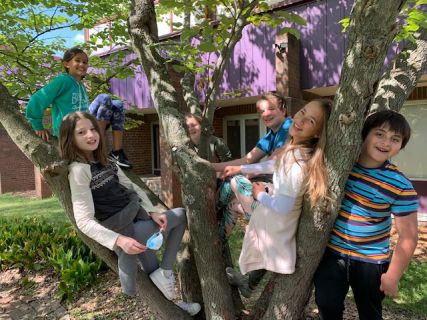 But, he adds, “joy at school and in learning is a foundation from which students gain the confidence that academic struggle is temporary and worthwhile.” There’s also a very real connection to the brain. “The brain does not exist by itself,” writes Professor Jack Shonkoff, director of the Center on the Developing Child. “Connecting the brain to the rest of the body is critically important. When we’re stressed, every cell in the body is working overtime.”
But, he adds, “joy at school and in learning is a foundation from which students gain the confidence that academic struggle is temporary and worthwhile.” There’s also a very real connection to the brain. “The brain does not exist by itself,” writes Professor Jack Shonkoff, director of the Center on the Developing Child. “Connecting the brain to the rest of the body is critically important. When we’re stressed, every cell in the body is working overtime.”
Students who appear joyless or unmotivated may not be making voluntary choices, says Judy Willis, a neurologist who went on to teach middle school for 10 years. Their brains, as Shonkoff points out, may just be responding to what’s going on around them, like the ups and downs of the pandemic and our push to “catch up” academically in schools.
“The truth is that when we scrub joy and comfort from the classroom, we distance our students from effective information processing and long-term memory storage,” Willis recently wrote in the Neuroscience of Joyful Education. “Instead of taking pleasure from learning, students become bored, anxious, and anything but engaged. They ultimately learn to feel bad about school and lose the joy they once felt.” Neuroimaging studies and measurement of brain chemical transmitters reveal that “when students are engaged and motivated and feel minimal stress, information flows freely through the affective filter in the amygdala and they achieve higher levels of cognition, make connections, and experience ‘aha’ moments. Such learning comes not from quiet classrooms and directed lectures, but from classrooms with an atmosphere of exuberant discovery.”
Irby saw this with his own children. When school went remote, they were not happy. “On the best days, they were ambivalent. On the bad days, they were miserable,” he says. When they returned to in-person learning this past fall, things mostly got better. His son, a first-grader, didn’t like people being too close and didn’t want to be overly corrected for his efforts, but “they were very happy to return to school. They loved almost everything about returning, from packing their book bags, seeing their friends and socializing, to developing relationships with their teachers.”
Happy is great, but what about the important idea that we need to regain academic ground lost during the pandemic? As Professor Tom Kane and his colleagues at the Center for Education Policy Research at Harvard University (CEPR) reveal in their new Road to COVID Recovery project, using real-time data and working with school districts across the country, learning loss from the pandemic is significant.
“I don’t think there’s a broad appreciation for the magnitude of the declines we’ve seen,” Kane told Ed. — the equivalent of kids missing three or four months of school last year. As he said in a recent The 74 article, “School districts have never had so many students so far behind.” And especially for some students. The Brookings Institute reported in March that test-score gaps between students in low-poverty and high-poverty elementary schools grew by approximately 20% in math and 15% in reading, primarily during the 2020–21 school year.
CEPR has called for tutoring, extra periods of instruction, Saturday academies, and afterschool programs. Schools, they say, should focus for the next couple of years on getting students back to pre-COVID academic levels.
But what does catch up mean for the joy that tired students and teachers also desperately need?
In a Harvard EdCast interview in February (2022), Susan Engel, a senior lecturer at Williams College and author of the new book, The Intellectual Lives of Children, said, “I heard a first-grade teacher say to me, back in August, when she was planning her remote teaching, she said, ‘The parents are so worried that their children aren’t going to keep up this year.’ And I said, ‘Keep up with what?’ And she looked surprised, and she said, ‘Well, with the standards.’ But I mean, the standards are completely arbitrary. Who made up those standards? Just a lot of people sitting in rooms. I don’t know. And I’m not sure they were good standards in the first place, but it’s silly to let those constrain you too much as a teacher right now.”
Which is why it was interesting, says Wade Whitehead, a fifth-grade teacher in Virginia now in his 28th year of teaching, that in the spring of 2020, when it became clear that we weren’t going back to in-person any time soon, “the first two things we threw out the window were grades and standardized testing.”
Why was that, he wondered? “I think it’s because those two rob students and teachers of joy. I think it was to keep students and teachers happy” as we shifted focus to everyone’s crushing social-emotional (SEL) needs. And there were other changes that at any other time would have seemed radical: Schools shortened the school day and cut back to just a few class blocks a day. “COVID was an opportunity for schools to go deep. People had the freedom to just learn. If you want to be around someone who is happy, be around someone who’s just learning something to learn, especially face-to-face. You’re just happier that way.”
Unfortunately, says Whitehead, a Certificate in School Management and Leadership graduate, a year later, we “picked up those two apples” — grades and standardized tests — “and put them back in the cart. I’m not against grades or tests. I’m for amazing grading systems and amazing assessment and accountability systems.”
Durney agrees that the “normal” way of schooling wasn’t working for everyone and says that we can still rethink schooling.
“We need to use the pandemic as an opportunity to consider how we meet the needs of all our students through engaging tasks,” he says. “Students have access to apps, games, etc., and there are things that can and should be leveraged when designing learning opportunities. It isn’t just academics that students missed over the past two years. They need opportunities to engage in activities that allow them to build and strengthen their SEL skills. Rigor can and should be fun!”
Kane agrees and says that academics and emotional care go hand-in-hand. If students feel more comfortable being back in school, they are going to have an easier time focusing, just as finding success in the classroom can lead to positive effects on mental health.
Irby also says it’s not an either-or as we move forward.
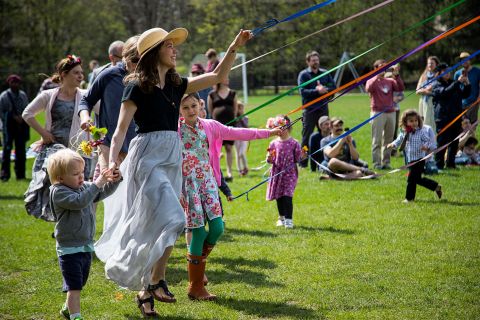 “I would say to educators who want to prioritize getting kids up to speed academically over joy that the two are not mutually exclusive. They should think about them as mutually reinforcing,” he says. “Not only do joy and academic rigor go hand in hand, but tactful educators plan to ensure both happen in tandem.” He noted that Gholdy Muhammad’s framework outlined in her book Cultivating Genius includes five pillars to consider when planning lessons, and joy is one of them. “An example is children’s museums, which offer learning opportunities that center play and fun. Exhibit curators plan with joy and excitement at the center of their learning design, but they don’t forgo academic content. In other words, the same way a teacher can plan to have students learn a disciplinary skill, they can plan for students to experience joy while doing it. One priority doesn’t need to outweigh the other.”
“I would say to educators who want to prioritize getting kids up to speed academically over joy that the two are not mutually exclusive. They should think about them as mutually reinforcing,” he says. “Not only do joy and academic rigor go hand in hand, but tactful educators plan to ensure both happen in tandem.” He noted that Gholdy Muhammad’s framework outlined in her book Cultivating Genius includes five pillars to consider when planning lessons, and joy is one of them. “An example is children’s museums, which offer learning opportunities that center play and fun. Exhibit curators plan with joy and excitement at the center of their learning design, but they don’t forgo academic content. In other words, the same way a teacher can plan to have students learn a disciplinary skill, they can plan for students to experience joy while doing it. One priority doesn’t need to outweigh the other.”
He says this is especially important for students who experience “compounding killjoys” — students who “live with circumstances and experiences that make it very difficult to be joyful. Some big picture joy killers include poverty, racism, social isolation, and concrete realities that stem from racial, social, and economic injustice such as hunger and food insecurity, housing insecurity, exposure to violence, health ailments, and living in a household or community where adults experience chronic stress. The more of these killjoys that students experience, the more concerned educators should be about using learning as a means to cultivate joy.”
For example, he says that if students don’t have access to safe green space, recess should become a priority. If they experience conflict with relationships in their lives, educators can create learning scenarios that are collaborative, “which provide opportunities to find joy in working with people.”
Keeping this in mind, Sandra Nagy, Ed.M.’02, managing director of Future Design School, says any effort to get kids caught up and still feel joy needs to be intentional.
“In order for this important change to take hold in schools, there needs to be a space for joy,” she says. “That means balancing efforts to address learning loss with looking ahead to what we can do next and celebrating the way teachers proved their ability to innovate and adapt in the past two years.”
And Brooks says we can do something else to bring back joy that would once have been considered radical: We can slow down.
“We can engage with students where they are, whatever they’re interested in at the moment, because that’s the ‘stuff’ of the world they’re trying so hard to build normalcy from,” he says. “We can play with them on the field and court and laugh with them throughout the day. There will still be time for all that needs to be learned.”
Is joy still below the surface?
It’s all important — and it’s not all doom and gloom. Even tired educators say that below the frustrations, they see joy again.
“Given the circumstances, I have seen a lot of joy at school,” says Durney. “One of the many benefits of working with elementary-aged children is that they can find joy and humor in just about any activity.” Right before winter break, for example, they held an outdoor schoolwide activity where students were able to share their work and play games created by their peers and with parent involvement. “It felt like pre-pandemic times where we’d gather as a whole school community. The day ended with our principal jumping into the frigid waters at the M Street Beach in South Boston because as a school community we exceeded our fundraising goal. The smiles and laughter throughout the entire day were a great way to end the first stretch of the school year.”
Salch addressed burnout when students — and teachers — stopped using a diagnostic online program by creating a challenge where students would earn a popcorn party if they logged in for 10 of 15 days in December.
“We have a local chocolate factory that sells 10-gallon bags of popcorn for $6. We can feed a whole school for less than $15,” she says. “Students that earned the reward came out to the courtyard to eat a coffee filter full of popcorn and dance to Kidz Bop.”
She celebrates her teachers, too — even in small ways. “I do everything I can to keep my teachers joyful,” she says. “I write handwritten notes to them monthly thanking them or congratulating them on something they accomplished. I give random gifts of pens or stickies to show appreciation. I organize themed meetings that included engaging activities that show each other we are humans before we are our professions.”
Joshua Neufeld, a first-grade teacher at the American International School of Guangzhou in China and a participant in a Project Zero program in 2021, is part of a peer coaching network for international teachers called Positivity Playground. He found that regular staff socializing has helped morale.
“The pandemic has been challenging for everyone, and Positivity Playground reminded me that together, as colleagues, we can generate more positive emotions and manage negative emotions effectively.” With this in mind, Neufeld organized a weekly lunchtime tea party for his colleagues called Positvi-Tea. It’s a time for teachers to hang out and talk, he says, often about things other than school. “This is a time that energizes the participants and challenges them to continue the day with a positive outlook. I leave the meetings feeling recharged, viewing upcoming situations with a sense of realistic optimism.”
Beyond celebrations and gatherings, others say a focus on personalized learning and setting small, actionable steps (not just big lofty goals) can help bring joy back. Brooks says teachers and other educators can also pay more attention to self-care.
“I am striking a better work-life balance, taking time to be with my family and recharge,” he says. “Doing so allows me to be more fully present and increases the likelihood of finding and making joyful moments at work.” The same needs to be done for all educators. “It does not take anything extraordinary to bring joy back to the workplace of teachers. I would argue it comes down to acknowledging the difficulty of the work in these times, commiserating openly and honestly about these challenges, facing them together, and celebrating every small success of the professionals in the building. Impromptu conversations, dropping by to check in, and showing gratitude are a few other easy and regular ways to bring a sense of joy back to the workplace on a daily basis.”
With her ladybug stickers in hand and her joke book open and ready for the next meeting, Julia de la Torre is still tired, but she knows the joy at her school is there.
“Quite frankly, joy is the reason I come to work every day and why I love my job,” she says. “Pop your head into any classroom and you’ll see kids thriving, connecting, and enjoying school. They may have masks on, but you can see joy in their eyes and in their laughter. I’m always trying to remind my teachers that there is joy everywhere in schools, if you stop to look for it. It may be harder to find during these challenging times, but it’s the joy that keeps us coming back for more.”
A Balanced Education Promotes Resilience
Waldorf education is an intentionally balanced approach to teaching with the goal of graduating happy, healthy, and resilient young people. We interweave academics, artistic activities, movement and outdoor time in a way that reduces stress and enhances learning. We provide rhythm for each day, season and year, which builds confidence and ensures that students feel secure. Social-emotional learning and problem solving are integrated throughout our curriculum so children develop the skills they need to thrive. We are a community where students feel seen, recognized, and challenged to do their best work and be their best selves.
This post is based on the findings of Ann S. Masten and Andrew J. Barnes in their National Library of Medicine paper, Resilience in Children: Developmental Perspectives. Please refer to the full paper for all citations.
Evidence continues to accumulate on the short- and long-term risks to health and well-being posed by adverse life experiences in children, particularly when adversities are prolonged, cumulative, or occurring during sensitive periods in early neurobiological development. Recent national and global examples include the growing concern about the impact of disasters, war, poverty, pandemics, climate change, and associated displacement on the global well-being of children. This confluence of threats to the present and future health of children motivates us to look at resilience and the factors that can support its development.
Resilience in humans can be broadly defined as the capacity to adapt successfully to challenges that threaten the function, survival, or future development of the individual. Resilience is also a feature of complex adaptive systems, including human individuals, but also families, economies, ecosystems, and organizations. This definition can also be applied to systems within an individual, such as the human immune system.
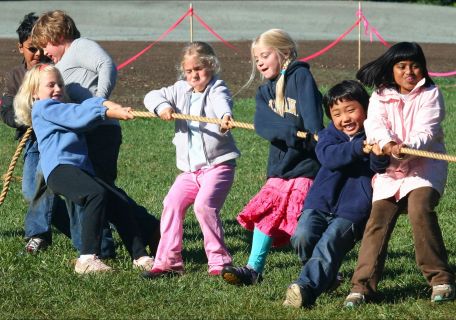
One of the most important implications of this definition is the idea that the resilience of a developing child is not circumscribed within the body and mind of that child. The capacity of an individual to adapt to challenges depends on their connections to other people and systems external to them through relationships and other processes. This includes their school environment and the relationships and experiences that are part of it.
For an individual person, resilience reflects all the adaptive capacity available at a given time in a given context that can be drawn upon to respond to current or future challenges facing the individual, through many different processes and connections. Resilience is not a trait, although individual differences in personality or cognitive skills clearly contribute to adaptive capacity. Supportive relationships play an enormous role in resilience across the lifespan. Close attachment bonds with a teacher or other caregiver and effective parenting can protect a young child in multiple ways that are not located “in the child”.
Human individuals have so much capacity for adaptation to adversity in part because their resilience depends on many interacting systems that co-evolved in biological and cultural evolution, conferring adaptive advantages. Moreover, children are often protected by multiple “back-up” systems, particularly embedded in their relationships with other people in their homes and communities.
Dose matters. Many studies of resilience have shown that the severity of exposure either to one extremely traumatic event or in the sense of cumulative risk, makes a difference. At the same time, these studies also show variation among individuals at similar levels of risk, some of whom are manifesting positive adaptation and development consistent with the presence of considerable resilience. In effect, these adaptive individuals are doing better than might be expected. These individuals motivated questions about how to account for their success and provided important clues for resilience science pertaining to the ongoing search for answers to the question of what makes a difference.
The shortlist of common resilience factors for child development shows that school environment can play an important role in helping children develop resilience, in particular the relationship development, teacher looping, intentional community, developmentally appropriate approach, and rhythms and rituals of a Waldorf education.
- Caring family, sensitive caregiving (nurturing family members)
- Close relationships, emotional security, belonging (family cohesion, belonging)
- Skilled parenting (skilled family management)
- Agency, motivation to adapt (active coping, mastery)Problem-solving skills, planning, executive function skills (collaborative problem-solving, family flexibility)
- Self-regulation skills, emotion regulation (co-regulation, balancing family needs)
- Self-efficacy, positive view of the self or identity (positive views of family and family identity)
- Hope, faith, optimism (hope, faith, optimism, positive family outlook)
- Meaning-making, belief life has meaning (coherence, family purpose, collective meaning-making)
- Routines and rituals (family routines and rituals, family role organization)
- Engagement in a well-functioning school
- Connections with well-functioning communities
An Education Where Kids Feel ‘Seen’
One of the best scientific predictors for how a child turns out in terms of happiness, academic success, and meaningful relationships is whether adults in their life consistently show up for them. Waldorf teachers strive to see and recognize each of their students, greeting them each morning individually, and working with them over multiple years to build on their unique strengths and meet their individual challenges so they can thrive.
This article was originally published by Daniel J. Siegel MD + Tina Payne Bryson PhD at https://ideas.ted.com/every-kid-needs-to-feel-seen-here-are-2-ways-you-can-do-this/
One way to set up a child for success: Take some time every day to really see them for who they are, not for who you want them to be.
Psychiatrist Daniel J. Siegel and Social worker Tina Payne Bryson.
One of the very best scientific predictors for how any child turns out — in terms of happiness, academic success, leadership skills, and meaningful relationships — is whether at least one adult in their life consistently shows up for them. And showing up doesn’t take a lot of time or energy, according to psychiatrist Daniel J. Siegel and social worker Tina Payne Bryson. Instead, it just requires acting in ways that ensure a child feels the Four S’s: Safe, Seen, Soothed and Secure. In this excerpt from their new book, The Power of Showing Up, Siegel and Bryson share two strategies that can make a child feel seen.
How good are you at seeing your kids? We mean really seeing them for who they are — perceiving them, making sense of them, and responding to them in timely and effective ways. This is how your child comes to experience the emotional sensation not only of belonging and of feeling felt, but also of being known.
Science suggests, and experience supports, that when we show up for our kids and give them the opportunity to be seen, they can learn how to see themselves with clarity and honesty. When we know our kids in a direct and truthful way, they learn to know themselves that way, too. Seeing our kids means that we ourselves need to learn how to perceive, make sense, and respond to them from a place of presence, to be open to who they actually are and who they are becoming, not who we’d like them to be and not filtered through our own fears or desires.
Take a moment and fast forward, in your mind, to the future when your child, now an adult, looks back and talks about whether he felt seen by you. Maybe he’s talking to a spouse, friend or therapist, someone they’d be brutally honest with. Perhaps he’s holding a cup of coffee, saying, “My mom, she wasn’t perfect, but I always knew she loved me just as I was.” Or, “My dad was always in my corner, even when I got in trouble.”
Would he say something like that? Or would he talk about how his parents always wanted him to be something he wasn’t, didn’t take the time to understand him, or wanted him to act in ways that weren’t authentic in order to play a particular role in the family or come across a certain way?
One of the worst ways we fail to see our children is to ignore their feelings. With a toddler, that might mean telling him, as he cries after falling down, “Don’t cry. You’re not hurt.” Or, an older child might feel genuinely anxious about attending the first meeting of a dance class. It’s unlikely she will feel more at ease if you say, “Don’t worry about it — there’s no reason to be nervous.”
Yes, we want to reassure our kids, and to be there for them to let them know they’ll be okay. But that’s far different from denying what they’re feeling, and explicitly telling them not to trust their emotions.
So instead, we want to simply see them. Notice what they’re experiencing, then be there for them and with them. We might say something like, “You’re going to be okay” or “Lots of people feel nervous on the first day. I’ll be there until you feel comfortable.”
When they feel felt and seen, it can create a sense of belonging as your child feels authentically known by you. She will also derive a sense of being both a “me” who is seen and respected and part of a “we”– something bigger than her solo self but that doesn’t require a compromise or the loss of her sense of being a unique individual. This is how seeing your child sets the foundation for future relationships where they can be an individual who is also a part of a connection.
What’s more, the empathy we communicate will be much more likely to create calm within our child. As is so often the case, when we show love and support, it makes life better not only for our child but for us as parents as well.
Strategy #1 for helping kids feel seen: Let curiosity lead you to take a deeper dive
A practical first step to helping our kids feel seen is just observe them — take the time to look at their behavior, discard preconceived ideas, and consider what’s really going on with. But really seeing them often requires more than just paying attention to what’s readily visible. Just as with adults, it’s often the case with children that there’s more going on beneath the surface than they let on. As parents, part of our responsibility is to dive deeper.
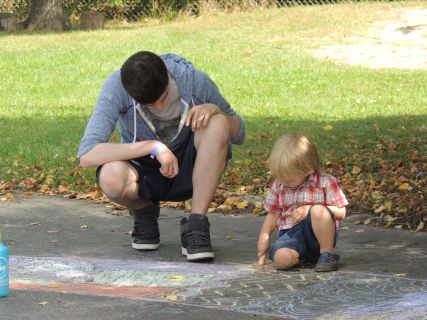
This curiosity is key. It’s one of the most important tools that a caring parent can use. When your toddler plays the “let’s push the plate of spaghetti off the high chair” game, your initial response might be frustration. If you assume he’s trying to press your buttons, you’ll respond accordingly. But if you look at his face and notice how fascinated he is by the splatter on the floor and the wall, you might feel and respond differently.
Cognitive scientists Alison Gopnik, Andrew Meltzoff and Patricia Kuhl have written about “the scientist in the crib,” explaining that a large percentage of what babies and young children do is part of an instinctual drive to learn and explore. If you can take a moment, pause and ask yourself, “I wonder why he did that?” If you see him as a young researcher who is gathering data as he explores this world, you can at the very least respond to his actions with intentionality and patience, even as you clean up his experiment.
We encourage parents to chase the “why” behind kids’ behavior. By asking “Why is my child doing that?” rather than immediately labeling an action as “bad behavior,” we’re much more likely to respond to the action for what it is. Sometimes it really may be a behavior that should be addressed. We believe that children definitely need boundaries, and it’s our job to teach them what’s okay and what’s not. But other times a child’s action may come from a developmentally typical place, in which case it should be responded to as such.
The same goes for other behaviors. If your child is quiet when she meets an adult and resists speaking up, she may not be refusing to be well mannered; she may be feeling shy or anxious. Again, that doesn’t mean you don’t teach her social skills along the way or encourage her to learn to speak in situations that are uncomfortable. It just means you want to see her for where she is right now. What are the feelings behind the behavior? Chase the why and examine the cause of her reticence; then you can respond more intentionally and effectively.
Strategy #2 for helping kids feel seen: Make space and time to look and learn
Much about seeing our kids is simply paying attention during the day, but it’s also about generating opportunities that allow your kids to show you who they are. Nighttime can be a great time to do this. There’s something about the end of the day, when the home gets quiet and the body feels tired, when distractions drop away and defenses are down, that makes us more apt to talk about our thoughts and memories, our fears and desires. This goes for all of us, adults and kids.
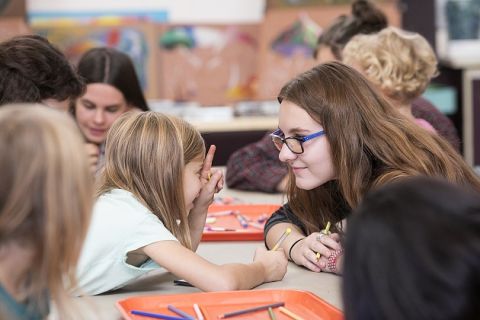 What’s required is a bit of effort and planning in terms of the family schedule. Kids need an adequate amount of sleep — we can’t stress that enough — so ideally you’ll begin bedtime early enough to make time for your usual routine plus a few minutes of chat or quiet waiting time to allow your children to talk if they are inclined. They might share details of their day or ask questions that help you gain a fuller understanding of what’s going on in their worlds — actual or imaginary.
What’s required is a bit of effort and planning in terms of the family schedule. Kids need an adequate amount of sleep — we can’t stress that enough — so ideally you’ll begin bedtime early enough to make time for your usual routine plus a few minutes of chat or quiet waiting time to allow your children to talk if they are inclined. They might share details of their day or ask questions that help you gain a fuller understanding of what’s going on in their worlds — actual or imaginary.
We know what some of you are thinking: “I don’t have one of those kids who willingly shares what they’re thinking and feeling.” We get it. The answer to the “How was your day” question seems to inevitably lead to the dreaded “Fine.” Imagining a chat time added to your child’s bedtime routine may produce the unpleasant image of you and your child silently lying next to each other, both of you waiting for something important to be shared.
We understand this concern. Keep in mind that the idea isn’t that every evening you’ll hear some earth-shattering revelation or deep exchange. That’s not realistic between adults, much less with kids. What’s more, it’s not the goal. The ultimate aim is to be present to your children — to create space and time to get to know them better and to understand them at a deeper level so you can help them grow into the fullness of who they are.
If you have a child who doesn’t eagerly share their inner thoughts, then you may need to ask more specific questions or pose ethical dilemmas you can consider together. The more you see and know your child, the easier this will become. At times, of course, silence is okay too. Being quiet together, simply breathing, can be intimate and connecting. So don’t feel pressure to force conversation when it’s not the right time.
We know it can be confusing, trying to determine what to say when and whether to encourage conversation or let things be quiet. But one of the best ways to see your kids — and to help them feel seen — is to create the space and time that cultivate opportunities for that kind of vision to take place.
Unplugged and Having Fun!
A TECH-FREE SUMMER MIGHT BE THE BEST SUMMER EVER!
The Importance of Play
Take a minute to think of a joyful childhood memory when you were engaged in play. Perhaps from summer camp or somewhere else. Where were you? Who was there? What were you doing? Was a smartphone involved? OK, now fast forward to today. Do you see kids playing in the same way you did as a child? Playing more? Playing less? Do your kids play as freely as you did as a child, with the same amount of supervision?
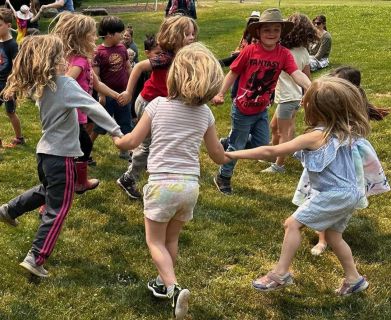
It’s no secret that kids love to play. When left to their own devices, kids can play all day in very creative ways. They make up stories, skits, games and songs. They immerse themselves in make-believe or lose themselves for hours in a book. Summer is an incubator of play, and there can be many unplanned moments of spontaneous play throughout the day. It’s a gift that cultivates joy. And, it’s also a critical pathway through which kids learn, grow, and develop into adults who can successfully navigate the world around them.
Child-directed play is important for social-emotional growth, developing social skills, and building strong friendships. It allows kids to explore social interactions in low risk situations. “Getting repeated feedback in a low-stakes environment is one of the main ways that play builds social skills”. When kids play together they learn to notice and interpret social cues, listen, take another person’s perspective, and share ideas and feelings in the process of negotiating and compromising. In his Ted Talk, The Decline of Play, psychologist Dr. Peter Gray further advocates for the importance of play. “Play is nature’s way of ensuring that …young human beings…acquire the skills that they need to develop successfully into adulthood”. When you allow your kids time for undirected play, they’re not only having fun, they’re cultivating tools that will support them in navigating life.
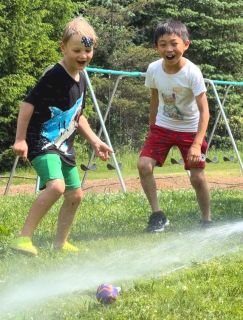 Watching a group of students playing in the sandbox, it is evident how play helps kids learn to collaborate. The kids will take on different roles. One digs channels with the shovel, and another gathers sand with a bucket. Some are in charge of detailing a structure, while others step back and plan the next expansion. When one student wants to change roles, they have to ask another to swap tools and positions. Sometimes changing roles requires negotiating how much longer each of them will continue in their current role before switching. If one doesn’t agree with another’s suggestion he or she might respond, “I don’t think that’s fair”, leading the others to consider what might feel fair to them. They nearly always find a compromise. In many ways, play is the antithesis of heavy social media use. The act of play places kids in situations where they are continually learning, connecting, increasing their empathy, trying new modes of social engagement, and have the time and space for observation and contemplation that help them process their social experiences.
Watching a group of students playing in the sandbox, it is evident how play helps kids learn to collaborate. The kids will take on different roles. One digs channels with the shovel, and another gathers sand with a bucket. Some are in charge of detailing a structure, while others step back and plan the next expansion. When one student wants to change roles, they have to ask another to swap tools and positions. Sometimes changing roles requires negotiating how much longer each of them will continue in their current role before switching. If one doesn’t agree with another’s suggestion he or she might respond, “I don’t think that’s fair”, leading the others to consider what might feel fair to them. They nearly always find a compromise. In many ways, play is the antithesis of heavy social media use. The act of play places kids in situations where they are continually learning, connecting, increasing their empathy, trying new modes of social engagement, and have the time and space for observation and contemplation that help them process their social experiences.
Free play also supports cognitive development, especially in younger children. It has been shown to increase neural connections in the brain (increasing pathways we use for critical thinking), build and strengthen the prefrontal cortex (the area of the brain responsible for decision-making, attention, problem-solving, impulse control, and planning), and support language skills. And while kids are playing, the absence of technology relieves the pressures of social media and actually helps kids sleep better. When humans view screens late at night they inevitably get less sleep, and they also lose out on the deep REM stage of sleep, which is critical for helping process and store events from the day into memory.
Today, our youth are spending less time engaging in self-directed play and more and more time on screens. A recent study found that in 2021, tweens (ages 8-12) spent about five and a half hours a day on screens, while teens (ages 13 to 18) spent about eight and a half hours a day on screens. Recent data released by the National Survey of Children’s Health found that in 2020 only 19.8% of school-aged children were physically active for at least one hour per day. How is this affecting our kids? And why is it essential to provide kids spaces where they can play and create together without the distractions of modern technology?
Social Media and Youth Mental Health
In 2007, Apple first released the iPhone and by 2012 had sold about 270 million units, equivalent to the population age 10 and older in the United States at that time. Translation - smartphones proliferated very quickly into modern society. And today there is a growing body of research that suggests heavy social media use is adversely impacting youth development.
According to Dr. Michael Rich, Associate Professor at Harvard Medical School, kids’ developing brains make it harder for them to limit their time on screens. Social media utilizes the same variable reward system that makes gambling so addictive. Unlike adults, a young person’s brain lacks a fully developed system of self-control to help them with stopping obsessive behavior. In a 2022 Pew Research Center study of American teenagers, 35% responded that they were using one of the top five social media platforms (YouTube, TikTok, Instagram, Snapchat, or Facebook) online “almost constantly”. And with the proliferation of smartphones and social media, rates of juvenile anxiety and depression have risen. From 2016 to 2020, researchers analyzing data from the National Survey of Children’s Health found that rates of anxiety and depression increased 29% and 27%, respectively, for children ages 3-17.
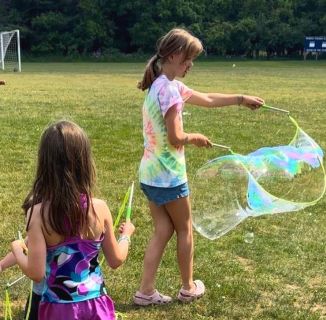 Dr. Jonathan Haidt, a social psychologist and Professor of Ethical Leadership at the NYU Stern School of Business, and Dr. Jean Twinge, Professor of Psychology at San Diego State University, have been compiling research about the links between social media and adolescent mental health. Through their work, they have found that many studies, using a variety of methods, suggest a strong link between heavy social media use and poor mental health, especially for girls.
Dr. Jonathan Haidt, a social psychologist and Professor of Ethical Leadership at the NYU Stern School of Business, and Dr. Jean Twinge, Professor of Psychology at San Diego State University, have been compiling research about the links between social media and adolescent mental health. Through their work, they have found that many studies, using a variety of methods, suggest a strong link between heavy social media use and poor mental health, especially for girls.
Haidt also notes that Instagram especially magnifies pressures for teens. “Social media—particularly Instagram, which displaces other forms of interaction among teens, puts the size of their friend group on public display, and subjects their physical appearance to the hard metrics of likes and comment counts—takes the worst parts of middle school and glossy women’s magazines and intensifies them”. Teens especially, can obsess over what they post on platforms like Instagram, “even when the app is not open, driving hours of obsessive thought, worry, and shame”.
Dr. Jenny Radesky, Assistant Professor at University of Michigan Medical School, focuses her research on the intersection of mobile technology and child development. Radesky (2018) surveyed a thorough study that suggests high-frequency digital media use is linked to an increase in new ADHD symptoms amongst teens, and researchers are also finding that heavy social media use leads to an increase in narcissistic behavior.
On a hopeful note, there is evidence that we get relief when we take a break from social media. Many experiments have shown that reducing or eliminating social media use for a week or more improves our mental health.
At Steiner, we understand that technology is a tool that our students will need in today's world. We recommend no technology for our youngest students and teach responsible use of it starting in middle school. Supporting this “slow-tech” approach, a break from technology has amazing value in helping kids understand and feel the benefits of spending time away from screens. As we end another school year and students have some much-needed free time, you might look for ways to preserve time for your children to play together without technology.
Waldorf Schools are Media Literacy Role Models
Waldorf education emphasizes thoughtful, intentional and developmentally appropriate technology use. We advocate for an experiential, relationship-based approach in early education, followed by a curriculum for older students that helps them understand tech as a tool, and engages them in conversations around digital ethics, privacy, media literacy, and balanced use of social media and technology. Our approach gives Waldorf graduates the tools and knowledge they need to be independent, creative, and ethical digital citizens. At Rudolf Steiner School of Ann Arbor, Cyber Civics is a required class in grades 6-8 and Computer Science and Programming are taught at the high school level.
This post was written by Soni Albright and originally published on cybercivics.com
As we celebrate Media Literacy Week… it’s hard to believe that Waldorf schools in North America have been leading the way when it comes to Media Literacy education.
What’s that? Waldorf schools and “Media” Literacy?
Do you mean those schools that are notoriously low-tech, and focus on things like face-to-face communication, hands-on learning, the great outdoors, and an art/music/movement integrated curriculum?
Yep, those schools!
Cyber Civics was founded at a public charter Waldorf school —Journey School—in 2010. Since its inception, most Waldorf schools (private and public) in North America, and many more internationally, have adopted the Cyber Civics program in their schools, and the vast majority have been teaching the lessons—which include digital citizenship, information literacy, and media literacy— since 2017.
Fast forward to 2021. The United States and most of the world is just now talking about the ‘need for digital citizenship’ and the importance of ‘educating our youth’ about media use, misinformation, balance and wellness and, most importantly, how to use tech ethically and wisely.
People worldwide are asking themselves “How do we control this Pandora’s Box after the pandemic? What can we do to help our kids help themselves in the digital landscape?”
All the while, Waldorf schools have been quietly holding this conversation with intentionality and patience: asking families to be thoughtful, mindful, discerning, and slow with media access for children. Not to deprive them, but rather to give children the gift of childhood—the endless opportunities that come with downtime, boredom, and unscheduled freedom. To favor face-to-face interactions over abstract experiences. To work on self-regulation, problem solving, physical movement, and social-emotional regulation.
By the time Waldorf students get to middle school, even though many aren’t using digital media at the same level as average kids their age, most are participating in weekly Cyber Civics lessons ranging from simple concepts such as what it means to be a citizen in any community and how to apply that to the digital world to more advanced topics such as: privacy and personal information, identifying misinformation, reading visual images, recognizing stereotypes and media representations, and ethical thinking in future technologies.
While many middle school students know their way around the device / app / platform, they haven’t been trained much in ethics, privacy, balance, and the decision-making aspects actually needed to survive and thrive in the digital age during adolescence.
We are so grateful for all the Waldorf schools that recognized the need for this important curriculum years ago, and who have grown with us over the years. We have learned with you, about our young people and what they need from us as examples and digital citizens.
Thank you for paving the way for this curriculum to be brought to so many other schools and community groups beyond the Waldorf sphere—public and private schools... Catholic, Hebrew, Montessori, and more.
And please take a bow for being the Media Literacy role models the world so desperately needs.
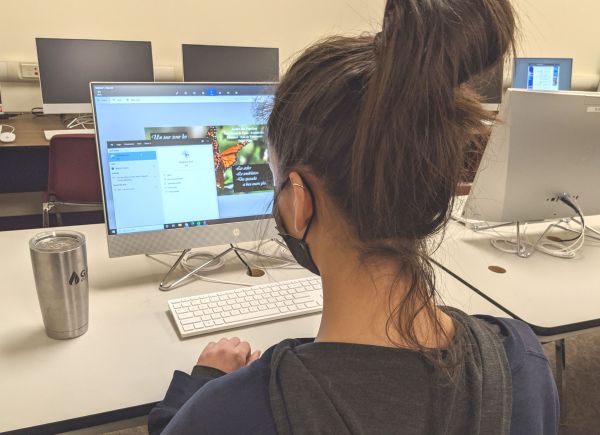
How Outdoor Learning Affects Students
A recent study focusing on children aged 5 to 18 revealed that outdoor education and activities have a multitude of benefits for students. Not only did students exhibit higher levels of self-confidence, stronger friendships, and a greater sense of belonging, but academic performance in math, science, and language also saw an improvement, coupled with increased motivation to learn. Waldorf education places significant value on diverse forms of outdoor learning and experiences, such as scientific observation and environmental projects, camping, field trips, and free exploratory play.
This article was originally published on Children & Nature Network.
Effects of regular classes in outdoor education settings: A systematic review on students' learning, social and health dimensions
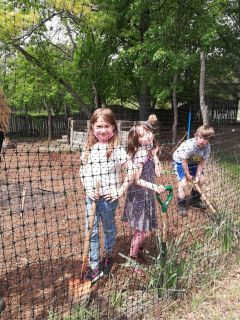
during a gardening class.
Regular classes in outdoor settings can promote students’ learning, health, social development, and concern for the environment
This systematic review of the literature was conducted (1) to identify studies about compulsory school- and curriculum-based outdoor education programs (OEPs) for students aged 5-18, (2) to categorize and evaluate outcomes, (3) to assess the methodological quality of the studies, and (4) to discuss possible benefits of such programs for students. The OEPs included in this review offered regular weekly or bi-weekly classes in a natural or cultural environment outside the classroom for at least four hours per week over a period of at least two months. In these programs, the outdoor learning was an embedded component of the school’s curriculum. Only studies reporting at least one student outcome and published in English- and German-language peer-reviewed journals were included.
Only thirteen studies met the inclusion criteria, indicating that the current state of research on OEPs is relatively small. The goals, participant groups, learning environments, methods used and reported outcomes differed widely across the programs. The methodological quality of the studies was, on average, moderate. Eight studies reported outcomes in terms of social dimensions, seven in learning dimensions, and four in additional outcomes. Two studies in the “additional outcomes” category reported on students’ physical activity, one on students’ mental health, one on action regulation behavior, and one on students’ environmental attitude and behavior.
Social outcomes included improved social competencies and social relations, such as self-esteem, self-confidence, trusting relationships, and the sense of belonging. Learning outcomes included improved academic performance in several subjects and improved skills in transferring the knowledge gained to real life situations. Two studies reporting learning outcomes also reported possible benefits relating to learning motivation. The research on physical activity, mental health and action regulation behavior was underrepresented in comparison to results in learning and social dimensions. The study reporting mental health outcomes found a significant decrease in mental health problems for boys but not for girls. One study reported growth in students’ self-confidence, leading them to take active responsibility for the environment.
The overall results of this review indicate that regular compulsory school- and curriculum-based OEPs can promote students’ social, academic, physical and psychological development. Further research is needed, however, to support what this review reports as “tendencies” in relation to the reported outcomes. The authors recommend more quasi-experimental and longitudinal studies with a greater number of participants and high methodological quality.
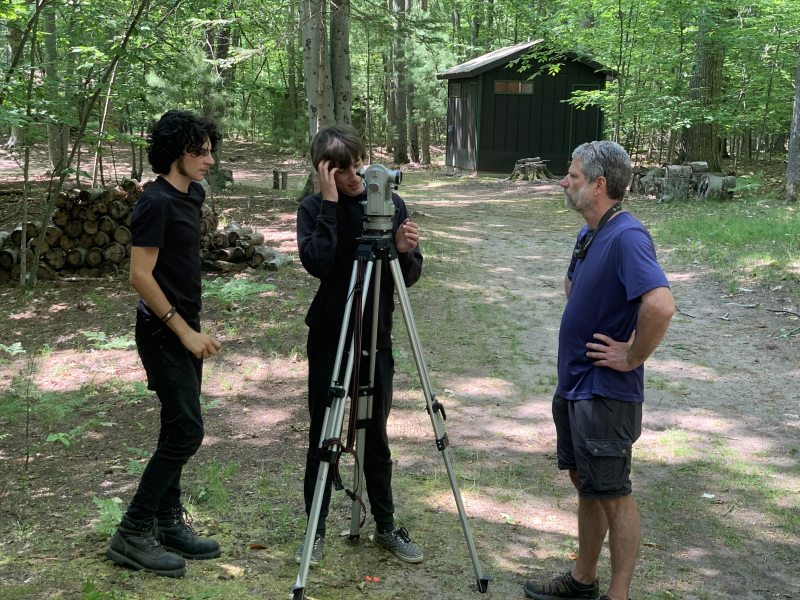
History Through Architecture
History through Architecture is a culminating course in the K-12 journey of Waldorf Education. It is a sweeping survey that traces the development of human consciousness over millennia from the earliest times to the present, including speculations about what the future may hold for our collective lives on Earth. Through this year’s special block, our 12th Graders explored their unique places in the long line of other human beings who have come before them. They began to see themselves with new eyes as they related to the larger human story.
The vehicle for their experience is what we call Architecture…a kind of “memory chip” that holds a rich tapestry of data points logged from all aspects of humanity – iconic facets that have imbued the “bricks-and-mortar” of buildings, cities, landscapes and human-made systems with the zeitgeist or spirit of the age in which they were manifested. Specific teachings in this block have been artfully designed to showcase how human ingenuity advanced with each succeeding generation. New ideas imaginatively evolved to produce structures, materials, energy and metaphysical awareness that created all our structures from simple barrow mounds of earliest human settlements to the soaring skyscrapers of our modern world. All of them imbued with an inner force – a seeking for higher awareness – what we term today a “spiritual experience”.
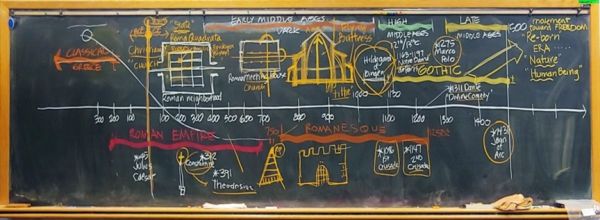
Colorful, hand-drawn chalkboards of chronological, step-by-step timelines showed how passive and dynamic forces of compression and tension moved across time to shape clay, stone, brick, metal, glass and myriad other materials and processes into the infinitely varied forms that we see in our material world. Concepts of “boundary” and “monument” drove the construction of fences, walls for protection from weather and wild animals, but also marked personal identity – whether for an individual or for tribes and clans, where the “I” became a “we”.
 The students hand drew and wrote the salient points of the block into their Main Lesson books. Applying their innate Creativity and Imagination, they recorded the content of their learning. Some exercises were given to demonstrate how historic structures could be shown in plan, section and in three dimensions for learning how buildings are represented.
The students hand drew and wrote the salient points of the block into their Main Lesson books. Applying their innate Creativity and Imagination, they recorded the content of their learning. Some exercises were given to demonstrate how historic structures could be shown in plan, section and in three dimensions for learning how buildings are represented.
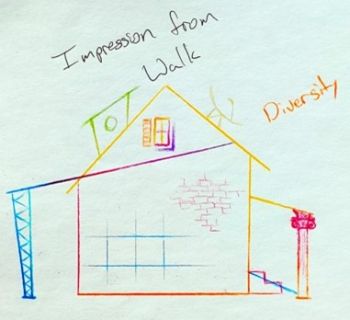 Other exercises engage the students’ personal observations and imaginations. For example, an “Impression/Expression” exercise was assigned for an outside walk taken through the Pontiac Trail neighborhood during one class period. Each student observed a particular perception along the way (a house, a tree, the rhythm of structures, a door or window detail, etc.) that impressed them. Returning to school, some form of expression was made from memory that described the nature of the student’s experience.
Other exercises engage the students’ personal observations and imaginations. For example, an “Impression/Expression” exercise was assigned for an outside walk taken through the Pontiac Trail neighborhood during one class period. Each student observed a particular perception along the way (a house, a tree, the rhythm of structures, a door or window detail, etc.) that impressed them. Returning to school, some form of expression was made from memory that described the nature of the student’s experience.
We contrasted challenging Thinking of the block’s first week with a Clay Handwork exercise that explored the curved line under the force of compression that freed the student’s imagination.
In the second week, Wooden Sticks Handwork created a new experience reflecting the advent of the straight-line forces of tension in history that led to developing open-structured trusses.

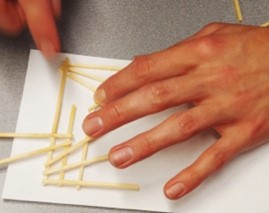

Toward the end of the block, after experiencing the great diversity of human structures built throughout history, students were given a final project where they were asked to design their own “architecture”. The day the assignment was given, this year’s Seniors immediately jumped into action, eagerly discussing possibilities and ideas for their individual or group to develop.
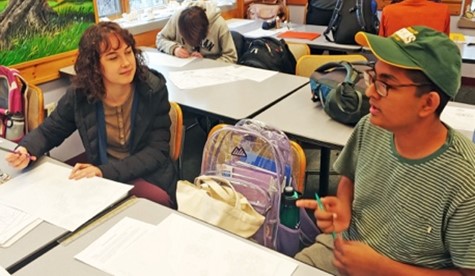 Over several days, students collaborated, talking and sketching ideas until a final design became clear. Every student prepared a statement, drawings, or a model to describe their vision. They then stood before their classmates and presented unique designs which inspired thoughtful questions and comments. This process of inner creativity - manifesting into outer forms -teaches lessons that will serve our Seniors as they venture out into the wider world to pursue their dreams in coming years.
Over several days, students collaborated, talking and sketching ideas until a final design became clear. Every student prepared a statement, drawings, or a model to describe their vision. They then stood before their classmates and presented unique designs which inspired thoughtful questions and comments. This process of inner creativity - manifesting into outer forms -teaches lessons that will serve our Seniors as they venture out into the wider world to pursue their dreams in coming years.
It is a great joy for me to witness the various revelations that unfold through each 12th Grader as they come to know themselves more deeply in the History through Architecture block.
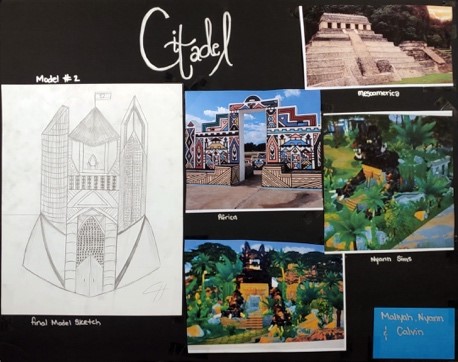

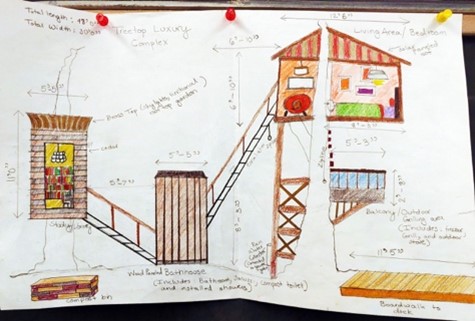
Adaptability Quotient: Educating for an Uncertain Future
With increasingly rapid changes in the nature of work, employers are interested not just in intelligence and social skills, but in an employee’s adaptability quotient–their ability to adjust to new challenges with flexibility, curiosity, courage, resilience, and problem-solving skills. In Waldorf education, we deepen rigorous academics by integrating art, outdoor education, music, theater, practical work, movement and hands-on learning. The depth and breadth of the Waldorf curriculum challenges students and develops crucial capacities that will help them adapt and thrive throughout their lives.
.jpg/Surpassing_Stem(1)__600x450.jpg)
This article was originally published Seb Murray on BBC.com
As workplaces change, is it enough to be smart? Enter AQ, the capacity to adapt that may well determine your future career success.
Once, if you wanted to assess how well someone might do climbing the career ladder, you might have considered asking them to take an IQ test. For years, it was thought that the intelligence quotient (IQ) test – which measures memory, analytical thinking and mathematical ability – was one of the best ways to predict our future job prospects.
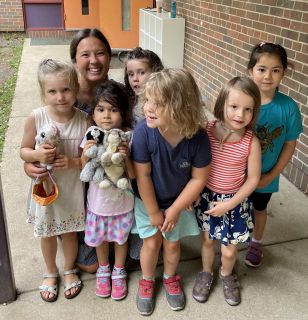 More recently, there has been increased attention on emotional intelligence (EQ), broadly characterized as a set of interpersonal, self-regulation and communication skills. EQ is now widely seen as a tool kit that plays an important role in helping us succeed in multiple aspects of life. Both IQ and EQ are considered important to our career success. But today, as technology redefines how we work, the skills we need to thrive in the job market are evolving too. Enter adaptability quotient, or AQ, a subjective set of qualities loosely defined as the ability to pivot and flourish in an environment of fast and frequent change.
More recently, there has been increased attention on emotional intelligence (EQ), broadly characterized as a set of interpersonal, self-regulation and communication skills. EQ is now widely seen as a tool kit that plays an important role in helping us succeed in multiple aspects of life. Both IQ and EQ are considered important to our career success. But today, as technology redefines how we work, the skills we need to thrive in the job market are evolving too. Enter adaptability quotient, or AQ, a subjective set of qualities loosely defined as the ability to pivot and flourish in an environment of fast and frequent change.
“IQ is the minimum you need to get a job, but AQ is how you will be successful over time,” says Natalie Fratto, a New York-based vice-president at Goldman Sachs who became interested in AQ when she was investing in tech start-ups. She has subsequently presented a popular TED talk on the subject. Fratto says AQ is not just the capacity to absorb new information, but the ability to work out what is relevant, to unlearn obsolete knowledge, overcome challenges, and to make a conscious effort to change. AQ involves flexibility, curiosity, courage, resilience and problem-solving skills too.
Amy Edmondson, a professor of leadership and management at Harvard Business School, says it is the breakneck speed of workplace change that will make AQ more valuable than IQ. Technology has vastly changed how many jobs are done, and the disruption will continue – over the next three years, 120 million people in the world’s 12 largest economies may need to be reskilled because of automation, according to a 2019 IBM study.
Any roles that involve spotting patterns in data – lawyers reviewing legal documents or doctors making a patient diagnosis, for example – are easy to automate, says Dave Coplin, CEO of The Envisioners, a UK-based technology consultancy. This is because an algorithm can do these tasks faster and more accurately than a human, he says. To avoid obsolescence, workers doing these jobs need to develop new skills like creativity to solve new problems, empathy to communicate better and accountability, using human intuition to supplement insight from machines. “If an algo can do 30% of the tasks that I used to do, what can I do with that spare capacity? The winners are those who choose to do things that algos can’t.”
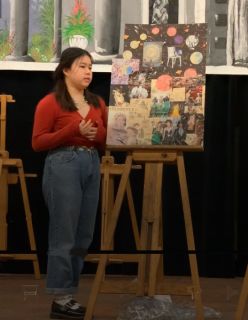 Edmondson says every profession will require adaptability and flexibility, from banking to the arts. Say you are an accountant. Your IQ gets you through the examinations to become qualified, then your EQ helps you connect with an interviewer, land a job and develop relationships with clients and colleagues. Then, when systems change or aspects of work are automated, you need AQ to accommodate this innovation and adapt to new ways of performing your role.
Edmondson says every profession will require adaptability and flexibility, from banking to the arts. Say you are an accountant. Your IQ gets you through the examinations to become qualified, then your EQ helps you connect with an interviewer, land a job and develop relationships with clients and colleagues. Then, when systems change or aspects of work are automated, you need AQ to accommodate this innovation and adapt to new ways of performing your role.
All three quotients are somewhat complementary, since they all help you to solve problems and therefore adapt, Edmondson says. An ideal candidate possesses all three, but not everyone does. “There are rigid geniuses,” she says. Having IQ, but no AQ would leave you struggling to embrace new ways of working using your existing skills – and low AQ makes it harder to acquire new ones.
AQ is now increasingly being sought at the hiring level. According to the IBM study, 5,670 executives globally rated behavioral skills as most critical for the workforce today, and chief among them was the “willingness to be flexible, agile and adaptable to change”. Will Gosling, Deloitte’s UK human capital consulting leader, says there’s no definitive method of measuring adaptability like an IQ test, but companies have woken up to AQ’s value and are changing their recruitment processes to help identify people who may be high in it.
Deloitte has started using immersive online simulations where job candidates are assessed on how well they adapt to potential workplace challenges; one assessment involves choosing how you would encourage reluctant colleagues to join a company triathlon team. Deloitte also looks to hire people who have shown they can perform in different functions, industries or geographies. “This proves they are agile and a fast learner,” Gosling says.
Fratto of Goldman Sachs, meanwhile, suggests three ways AQ might manifest in potential candidates: if they can picture possible versions of the future by asking “what if” questions, if they can unlearn information to challenge presumptions and if they enjoy exploration or seeking out new experiences.
She says this is not a definitive recipe for AQ, but recruiters should pose these kinds of questions to tease out evidence of AQ in candidates. In fact, she puts them to founders of start-ups seeking her investment.“Start-ups go through evolutions,” she explains. “It’s not like the founder has a written job description; they need some of a fluctuating list of 30 or 50 skills to be successful.”
One good thing about AQ is that – even if you can’t measure it – experts say you can work to develop it. Penny Locaso, the Australian founder ofBKindred, an education companythat helps people to become more adaptable, says some people have more curious or courageous personalities, which may explain why they are naturally better at adapting than others. “However, if one does not continue to surf the edge of their discomfort, the adaptability you are born with could decrease over time.”
She suggests three ways to boost your adaptability: first, limit distractions and learn to focus so you can determine what adaptations to make. Second, ask uncomfortable questions, like for a pay rise, to develop courage and normalize fear. Third, be curious about things that fascinate you by having more conversations rather than Googling the answer, something “which wires our brains to be lazy” and diminishes our ability to solve difficult challenges.
Otto Scharmer, a senior lecturer at the MIT Sloan School of Management who has written books on learning from the emerging future, suggests other methods. In a TED talk, he recommends remaining open to new possibilities, trying to see a situation through someone else’s eyes and reducing your ego so that you can feel comfortable with the unknown.
One thing we do know is that the workplaces of the future will operate differently. We may not all be comfortable with the pace of change – but we can prepare. As Edmondson says: “Learning to learn is mission critical. The ability to learn, change, grow, experiment will become far more important than subject expertise.”
Theater Develops Creativity, Empathy and Confidence
The performing arts help children develop a range of beneficial life skills, such as quick thinking, problem solving, and building self confidence. Theater strengthens empathy by asking a child to embody what their character is feeling and experiencing, and putting on a play also requires students to work as a team. In Waldorf education, students are involved in class plays and musical performances every year. We see the wide-ranging positive impact on our students and the powerful boost to their self confidence that the performing arts provide.
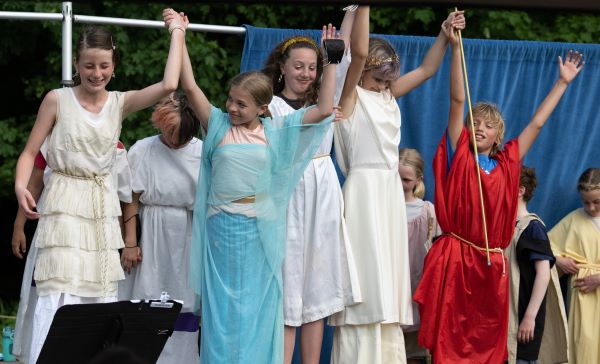
This article was originally written by Julia Savacool and published by Scolastic.com
It’s no big secret that getting kids involved in the performing arts can have major payoffs in school. After all, research shows that children who sing/dance/act/play their little hearts out are four times more likely to be recognized for academic achievement compared with their non-performing friends — and they tend to have enhanced cognitive, motor, and social development to boot. But the benefits don’t end there. Getting up on stage can enrich your child’s life in all sorts of surprising ways.
Kids Who Perform Are Quick Thinkers
Whether you’re a kid or an adult, the ability to stay calm and carry on is what keeps a small blooper from mushrooming into a major one. “When something goes wrong during a show, kids learn to improvise,” says Brian Olkowski, a 4th- and 5th- grade teacher in San Ramon, CA, and director of the school’s drama club. “One of the best things kids discover is how to think on their feet.” No performance is ever perfect, says Olkowski, so the real skill is learning to minimize errors and get back on track. “When someone flubs a line, the other kids learn how to cover for him,” he says. “I tell them it’s not about never making a mistake; it’s about never letting the audience see your mistake. Those are great skills that transfer to the classroom setting as well, whether it’s giving a presentation in front of peers or being called on to answer questions.”
Still, it helps to prepare your child for the possibility of problems cropping up, says Lisa Lollar, Psy.D., a psychologist in Denver, CO, who works with performing artists. “Talk about what she might do if she drops her music or forgets a line,” says Lollar. “Working through the scenarios in advance and coming up with a solution will help her feel prepared if something surprising happens.” The ability to expect the unexpected — and then roll with it — will give your child confidence any time she tests new waters. Lollar adds: “If you help your child define success as being willing to try something new, the idea of messing up isn’t so scary.”
They Master Their Anxiety
.jpg/2022%20Grade%2010%20Greek%20Play_Moment(3)__329x320.jpg) Let’s face it: Even grown-ups get nervous when we have to speak in front of our colleagues or give a presentation to the boss. Learning from an early age how to cope with performance jitters gives kids a leg up in those big life moments. “The first step for a parent is to normalize a child’s feelings of anxiety,” says Lollar. “Tell them, ‘You know, a lot of kids — and even adults — feel nervous before a performance. It’s completely natural.’” It won’t take away the nerves, but it will let your child know there’s nothing wrong with feeling this way.
Let’s face it: Even grown-ups get nervous when we have to speak in front of our colleagues or give a presentation to the boss. Learning from an early age how to cope with performance jitters gives kids a leg up in those big life moments. “The first step for a parent is to normalize a child’s feelings of anxiety,” says Lollar. “Tell them, ‘You know, a lot of kids — and even adults — feel nervous before a performance. It’s completely natural.’” It won’t take away the nerves, but it will let your child know there’s nothing wrong with feeling this way.
Then before the big show, talk your child through his worries by reminding him of other moments when he’s felt anxious, even when things turned out well. “Remind him of the baseball game when he felt really nervous at the plate, but managed to get a great hit,” suggests Lollar. “Recalling past experiences with positive outcomes gives a child confidence.” Other tricks: Help your child calm his body in the minutes before the performance begins by taking four or five long, deep breaths or counting backward from seven. Both force his mind to focus on something other than his nerves.
Once the show is over, let your child bask in his accomplishment, then casually comment on how well everything went. He will carry this experience with him for the next time, as more evidence that he can successfully perform under pressure.
Performers Express Brand-New Emotions
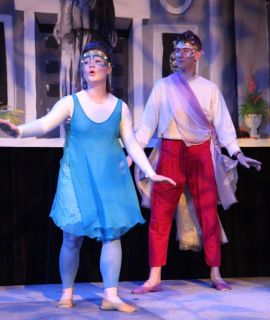 One of the wonderful things about being in a play is that for a short period of time, you get to become someone else. For a child who struggles to talk about her feelings, there is a tremendous relief in disappearing behind a character and using it as an intermediary through which to open up. “It is a very safe way for kids to try out certain feelings — and take ownership of them — while playing the role of someone else,” says Olkowski, who also runs a summer theater program for children. “I’ve worked with shy kids who are able to blossom on stage and express themselves in a way they aren’t comfortable doing around their peers.”
One of the wonderful things about being in a play is that for a short period of time, you get to become someone else. For a child who struggles to talk about her feelings, there is a tremendous relief in disappearing behind a character and using it as an intermediary through which to open up. “It is a very safe way for kids to try out certain feelings — and take ownership of them — while playing the role of someone else,” says Olkowski, who also runs a summer theater program for children. “I’ve worked with shy kids who are able to blossom on stage and express themselves in a way they aren’t comfortable doing around their peers.”
Playing the role of someone else also teaches kids about empathy. “They learn to put themselves in someone else’s shoes,” says Jessica Hoffman Davis, author of Why Our Schools Need the Arts. “In performing the part of someone else, they learn what it’s like to think like that other person.”
Parents can also use a child’s theater performance to open a dialogue about sensitive issues. “Take the experience of a character in the play and tie it to your child’s situation,” says Lollar. “If your child is nervous about her first day of school, it helps to say, ‘Remember when you were in that play, and the character Lucy was scared? How did she handle it? What was she feeling? Did it work out OK for her?’ Drawing parallels to the character’s situation and her own will make your child more comfortable talking about her feelings.”
For kids who aren’t into acting, dance can offer another way to explore their interior world, says Annie Spell, Ph.D., a child psychologist in Lafayette, LA, and co-creator of Leap ’N Learn for the Classroom, a movement program for kids. “Dance teaches kids to think in a totally different way. You take the physiological experience of an emotion and assign it a corresponding movement instead of a word. It can be a powerful tool for kids who have trouble expressing themselves.”
Their Self-Esteem Can Soar
 There’s nothing quite like hearing a crowd of total strangers laugh at your joke or applaud your double pirouette to make you feel like a star. “Hearing the audience clap at the end of the show is an incredible feeling,” says Olkowski. “The kids are like, ‘Hey, this is for me!’ That instant positive feedback is really rewarding.”
There’s nothing quite like hearing a crowd of total strangers laugh at your joke or applaud your double pirouette to make you feel like a star. “Hearing the audience clap at the end of the show is an incredible feeling,” says Olkowski. “The kids are like, ‘Hey, this is for me!’ That instant positive feedback is really rewarding.”
But it’s more than just the ego boost from the fans — any type of performance requires teamwork to succeed. “Kids are introduced to the notion of an ensemble,” says Davis. “It’s not just you up on stage. You are responsible for a larger group that is counting on you to do your part so they can do theirs.” That weight of personal responsibility is rare in a child’s world, and successfully delivering his lines or hitting the right guitar chords means more because of what’s at stake.
“During a performance, kids become part of a larger system, working toward a common goal,” adds Spell. “It is the culmination of weeks of practice, so the performance itself becomes the reward for all that work.” Although a positive performance will give your child a self-esteem injection, it’s important to put the emphasis on effort, rather than results. “Every child will fail at some point,” notes Spell. “But if they judge themselves on putting their best effort forward and not on being perfect, the experience can still feel rewarding.”
Performers See the World in a Whole New Way
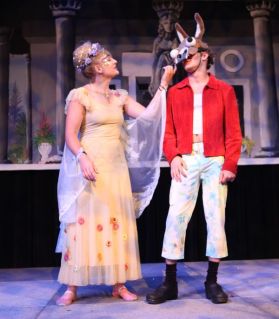 At the end of the day, the transferable skills a child learns from performing may not be nearly as important as the experience of performing itself. “We’re always looking for ways the arts can benefit kids in other areas of life,” says Davis. “It’s as if art for art’s sake isn’t worth our time, when in fact, it gives kids an awareness about themselves and creative skills they’d never learn otherwise.” She may never apply the improvisation skills she learned during the school play to a math equation or turn her teamwork with other dancers into leadership on the school playground. But simply by having been part of the performance process, your child has been exposed to a new way of thinking and doing. And that alone is a success to be proud of.
At the end of the day, the transferable skills a child learns from performing may not be nearly as important as the experience of performing itself. “We’re always looking for ways the arts can benefit kids in other areas of life,” says Davis. “It’s as if art for art’s sake isn’t worth our time, when in fact, it gives kids an awareness about themselves and creative skills they’d never learn otherwise.” She may never apply the improvisation skills she learned during the school play to a math equation or turn her teamwork with other dancers into leadership on the school playground. But simply by having been part of the performance process, your child has been exposed to a new way of thinking and doing. And that alone is a success to be proud of.
The Importance of Parent Education
Raising children who will become happy, healthy, thriving adults is one of the most challenging and important roles anyone can have. At Rudolf Steiner School of Ann Arbor, we engage not only the student but their families as well. We believe in meaningful relationships, where our trained teachers work with families over multiple years to understand how to best support each child. Our in-depth narrative grading system, our ongoing adult education and volunteer opportunities, and our rich cultural and festival life all serve to create a welcoming community where families feel supported and engaged.
This article by Tracy Trautner was originally posted by Michigan State University Extension

Parenting, for many, is the most important and challenging job to ever have and a role that gets little recognition. Parents and other primary caregivers of all types (foster parents, grandparents, adoptive parents, etc.) can all use an opportunity to learn tips and new strategies to relate with our children and enjoy being with them. It also allows an opportunity to engage with other parents that may be having similar issues and struggles.
Today, there are new parenting challenges to overcome. Skills, routines and values were passed from generation to generation and parents could rely on networks of support to help them parent. Compared to past generations, many parents and families have become isolated and are raising children in silos. These parents are trying to figure it out alone. The skills a child needs to be successful have changed as well.
Over the years, each generation sees a change in what society considers parenting issues. Currently, families struggle with behavior management issues including lack of expectations, child supervision and excessively severe and inconsistent punishment on behalf of the parent. According to John Geldhoff, an Oregon University assistant professor of behavioral and health science, all parents—high income, low income, mandated and non–mandated—can benefit from evidence-based parenting education. Parents who have attended classes and learned effective discipline and parenting techniques report having children with higher grades, fewer behavior problems, less substance abuse issues, better mental health and greater social competence.
Parenting education programs offer support and education that can address issues and make parenting easier, more enjoyable and can strengthen a child’s ability to thrive. Building Early Emotional Skills in Young Children is one of many parenting programs offered by Michigan State University Extension. Many other reliable sources of information for parents are available to meet their needs. Resources are readily available online through YouTube videos, research-based websites, in person, podcasts, blogs and books that are readily accessible. Before you engage with a parenting resource, check the source of the information to be certain it is research based and reputable.
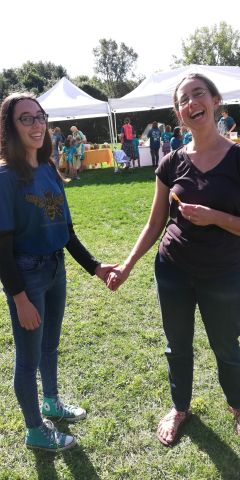 Your child’s childcare center or school, community center, or local library may offer in-person trainings. In-person parent education allows parents the options to ask pertinent questions to their situation and potentially meet other parents to share stories with. A frequent issue that is brought up is relatable to everyone in the class, quality discussions begins, and ideas are shared. Online classes may also offer valuable opportunities to explore materials at your own pace and connect virtually with other parents.
Your child’s childcare center or school, community center, or local library may offer in-person trainings. In-person parent education allows parents the options to ask pertinent questions to their situation and potentially meet other parents to share stories with. A frequent issue that is brought up is relatable to everyone in the class, quality discussions begins, and ideas are shared. Online classes may also offer valuable opportunities to explore materials at your own pace and connect virtually with other parents.
Parenting education can be seen as something negative, like it is a reflection on your ability to parent. Parenting education is not just for parents who are struggling or having severe problems with their children’s behavior—it can be an opportunity for parents to feel more confident as a parent, prevent future problems, enjoy being with their children and help their family get along.
We may invest time and money to take our new puppy to obedience class, take golf lessons or practice our swing, or take our family out to eat or on vacation as a way to invest in ourselves and our families. Similarly, parenting classes are an investment in our personal growth and our children’s future ability to build healthy relationships, make and retain friends, get a job and keep it, and become great parents themselves.
To find more valuable, research-based information about parenting, check out the following resources:
School Trips as a Rite of Passage

Our 8th grade class recently returned from its annual class trip, a 10-day wilderness adventure in New England. This 8th grade trip is a rite of passage for students, the culmination of progressively longer and more adventurous excursions undertaken by the class teachers and students over the years.
At Rudolf Steiner School of Ann Arbor, we strongly believe these class trips are a vital part of the student experience. They foster a connection with the outdoors, offer opportunities for teamwork and class camaraderie, give some students an experience they might otherwise never have, and teach responsibility and self-knowledge. They also provide moments of joy, life-long memories, and shared experiences that further cement the bonds among the students.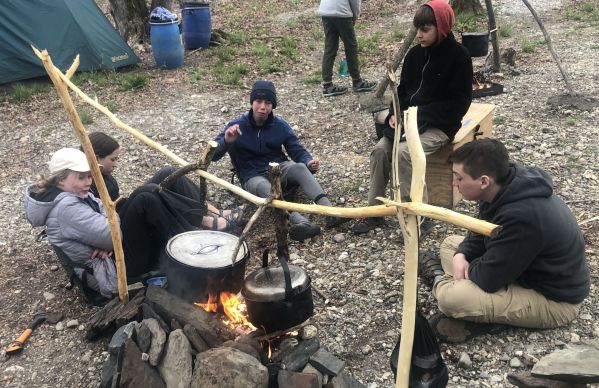
Typically, a class’s first overnight trip takes place in 3rd grade, where the class spends a night at a farm. This supplements the in-class work of 3rd grade, where students learn about farming, shelters, and ways people have lived and survived throughout history. By the time they reach middle school, the students have been on several overnight trips. In the middle grades, they spend a few nights in a dark-sky area as part of their astronomy studies and travel to Hocking Hills, Ohio, to further their lessons in mineralogy and geology.
The 8th grade trip is a wilderness adventure experience. RSSAA has generally used two organizations to help us with this experience: the Northwaters & Langskib camp based out of Temagami, Ontario or Kroka Expeditions, based out of Marlow, N.H. Each offers a program of canoeing and camping that challenges the students physically; requires them to work together to set up camp, cook food, clean dishes, take care of the canoes, etc.; and provides an opportunity for self-reflection, community sharing, and social and emotional growth. These trips are usually undertaken at the start of the school year, or even before the school year officially begins, as they are an excellent way to launch the class into their last year together before high school.
As an 8th grader teacher, I have experienced both the Northwaters and Kroka experiences — both were incredible and so important for my students. Last year, my class went to Kroka and paddled down the Battenkill River from Vermont to New York — the same path taken by this year’s group of 8th graders. My class enjoyed the challenges posed by canoeing along a swift-moving river — we had to navigate rapids, hairpin turns, fallen trees, lots of rocks, and ever-changing water depths. Despite the challenges, there is little to compare to the feeling of navigating your way down an isolated, scenic river, seeing birds and other wildlife on the shores, discovering the best place to pitch a tent, staring a fire and making food for your class, and chatting with friends by the fire as the stars emerge.
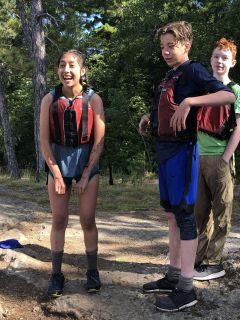 As is the intent of a rite of passage, when a class returns to school following these trips it is evident how much the students have grown, both as individuals who confronted and overcame their own personal challenges on the trip, and as a group who discovered strengths and vulnerabilities in their classmates they never knew before and who return with a shared experience that belongs only to them. Each year there is inevitably a student or two who do not want to take on the expected rigors of the trip, but upon return they are always glad they did and many say they now feel like they could accomplish anything!
As is the intent of a rite of passage, when a class returns to school following these trips it is evident how much the students have grown, both as individuals who confronted and overcame their own personal challenges on the trip, and as a group who discovered strengths and vulnerabilities in their classmates they never knew before and who return with a shared experience that belongs only to them. Each year there is inevitably a student or two who do not want to take on the expected rigors of the trip, but upon return they are always glad they did and many say they now feel like they could accomplish anything!
While the 8th grade trip is in many ways the culmination of these experiences in the grades and middle school, these types of trips continue for students at our high school. Ninth graders end their freshman year with a week at the Community Farm of Ann Arbor, while 10th graders take the knowledge they learned during their sophomore year for a week-long land surveying expedition at Camp Lookout on the northern shores of Lake Michigan. Seniors wrap up their RSSAA journey with two amazing adventures: a Zoology trip to Hermit Island, Maine, where they explore the flora and fauna of the ocean and tidal pools; and an adventure in Venice, Florence, and Rome, where they explore the artists, writers, and thinkers they learned about in the classroom for so many years.
These trips are a cherished and important part of our curriculum. I believe they play a central role in helping our graduates to be well-rounded citizens of the world, with the self-confidence to take off on their own life adventures.
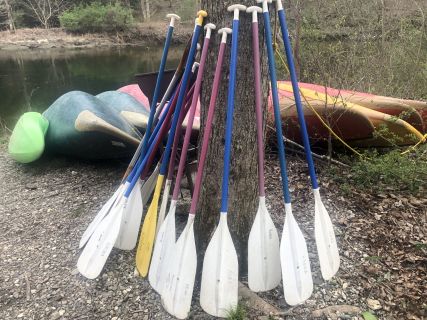
Standing on the Shoulders of Gnomes
When we think of progress, many people refer to the “giants” who propel an organization forward. In reality, it’s all the “gnomes” who do the hard work that makes a community successful. This is certainly the case for Rudolf Steiner School of Ann Arbor. With humble beginnings in a three-room building near Cobblestone Farm in 1980, and eventually a home for our K-8 program on Newport Road, our growing community of inspired parents and teachers had a vision for a full PreK-12 program.
A high school study group was active for many years and eventually, the College of Teachers hired Agaf Dancy in 1996 to spend a year preparing to welcome 22 ninth and tenth graders in the fall. A valiant effort was made by Robert Black, Margot Amrine, Becky Schmitt and Judie Erb to build the high school on the Lower School's Newport Road campus, but there was resistance in the surrounding neighborhood. Judie proposed the Genesis building on Packard Road and Agaf found the ideal faculty team of Mary Emery (Humanities) and Geoff Robb (Science), who were trained Waldorf high school teachers. Navigating precarious waters, Judie, Margot and Fred Amrine won over a reluctant Board and in the fall of 1997, 22 high school students attended classes in the basement of the Genesis building.
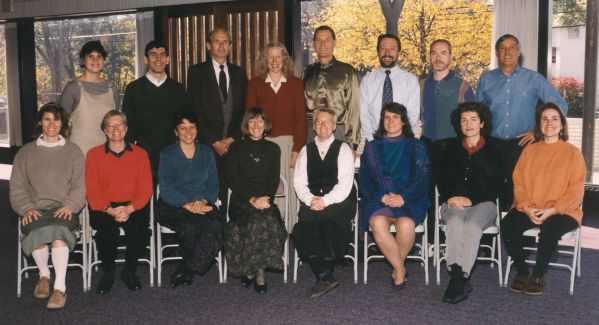
Ashlea Walton (HS’ 01) recalls, “It didn’t matter that our classes were small or that we were learning in a basement. Ms. Emery and Mr. Robb, along with the other faculty, made us feel part of a family and the subject areas were enlivened by their enthusiastic approach to teaching.”
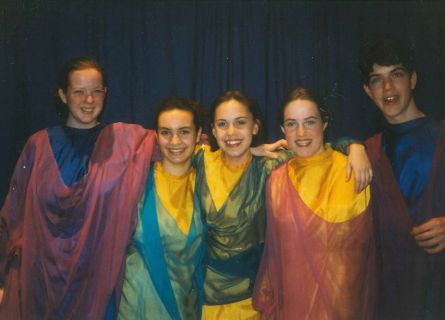
Caroline Freitag (HS '02) has known since 7th grade that she would be a Waldorf teacher and is now in her seventeenth-year class teaching, working right here at RSSAA! As one of the pioneering high school students, Caroline didn’t realize initially, “… but I was seeking a high school experience where I was seen by my teachers and peers. These strong personal relationships, along with a wide array of educational opportunities and trips, led me to pursue a college experience that offered the same things.”
Mary and Geoff led an amazing team of supporting faculty including Elena Efimova (Art), Robert Santacroce (Eurythmy), Erica Choberka (Biology), Janice Sanders (Instrumental), Barbara Brown (Bookbinding & Basket-weaving), David Van Eck (Technology) and Margot Amrine (History).
Erica Choberka was a teaching assistant at University of Tennessee, Knoxville and started her high school teaching career at RSSAA. Along with teaching most of the science classes, she briefly taught gym and writing as well - it was all hands-on deck. As a twenty-something herself, she would sometimes hear students listening to “Sublime” on their boombox and resisted the temptation to join them (she was a fan).
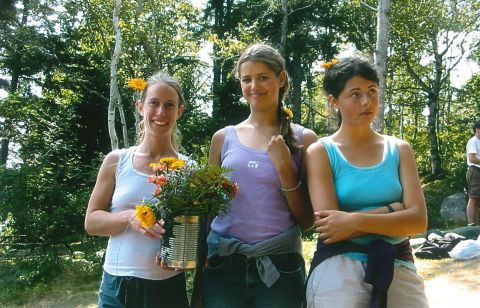
Elena Efimova held classes in her home art studio, where students were bussed daily. Her whole house was open to the students - snacks and drinks in the fridge, bathroom in the master bedroom, and a “hotel lobby” in the living room. Some students even stayed for dinner if their parents showed up late. The first senior mosaics (the Five Elements) were created by the first graduating class of five students and now hang in the hallway at the Lower School.
Eventually, we needed more space and in October 2001, a six-acre homestead and factory, located on Pontiac Trail, was purchased to be the permanent home for our growing high school. A staunch group of eager, professional volunteers, who dubbed themselves "The Four Musketeers" (Tim Vachon, Victor Leabu, Robin Grosshuesch and Robert Black) donated both skilled labor and materials to improve the Frame House and the Stone House buildings on the property into administrative spaces. The generous support of key donors, like the Fox family and Erb Downward family and Seyhan Eğe, empowered a whole host of volunteers from families, students, staff and faculty to put the final touches on the former factory building, built by Christman Company and sub-contractor Brivar. The new campus opened in the fall of 2002.

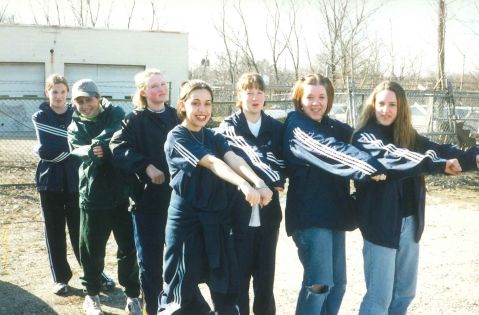
When Evan Schmitt (HS ’01) reflects on his time at RSSAA, “I don’t think a day goes by where I don’t apply the lessons I learned during my time at the Steiner School. So much of my job is talking with organizations about their role in creating a fairer, more secure, and more equitable global economy where individual rights are respected and protected. The seeds of that ethos were planted in me every day I walked into that school…by the teachers, the community, and my fellow students”. As a junior, Evan was key in organizing the first basketball team, coached by Bob Cosey. The sports teams gained momentum, sometimes “borrowing” 8th graders to complete the teams.
In 2008, RSSAA received our largest gift, a bequest of $834,000 from Seyhan Eğe’s estate. This gift paid for a dedicated middle school building in 2016 and launched the Inspire. Create. Lead. Capital Campaign for a high school campus expansion of a gym, lab, classrooms, and performance spaces in 2018, solidifying the commitment to a full PreK-12 Waldorf education.
Although our spaces are beautiful and inspiring, it’s our faculty that make our school an exceptional experience for students and families. A high school parent recognized that during the pandemic, everyone was managing stressful situations and our faculty and staff were doing the same. However, they were also striving to provide the best experience they could for our students along with taking pay cuts to balance the budget. That is devotion.
These stories have reminded us of where we’ve been and how many involved families helped us get there. We are entering the next phase of our development, with seeds being planted to eliminate debt and build an endowment, to create an outstanding Waldorf educational experience that supports our students with outstanding educators, passionate administration, facility maintenance, and financial stability.
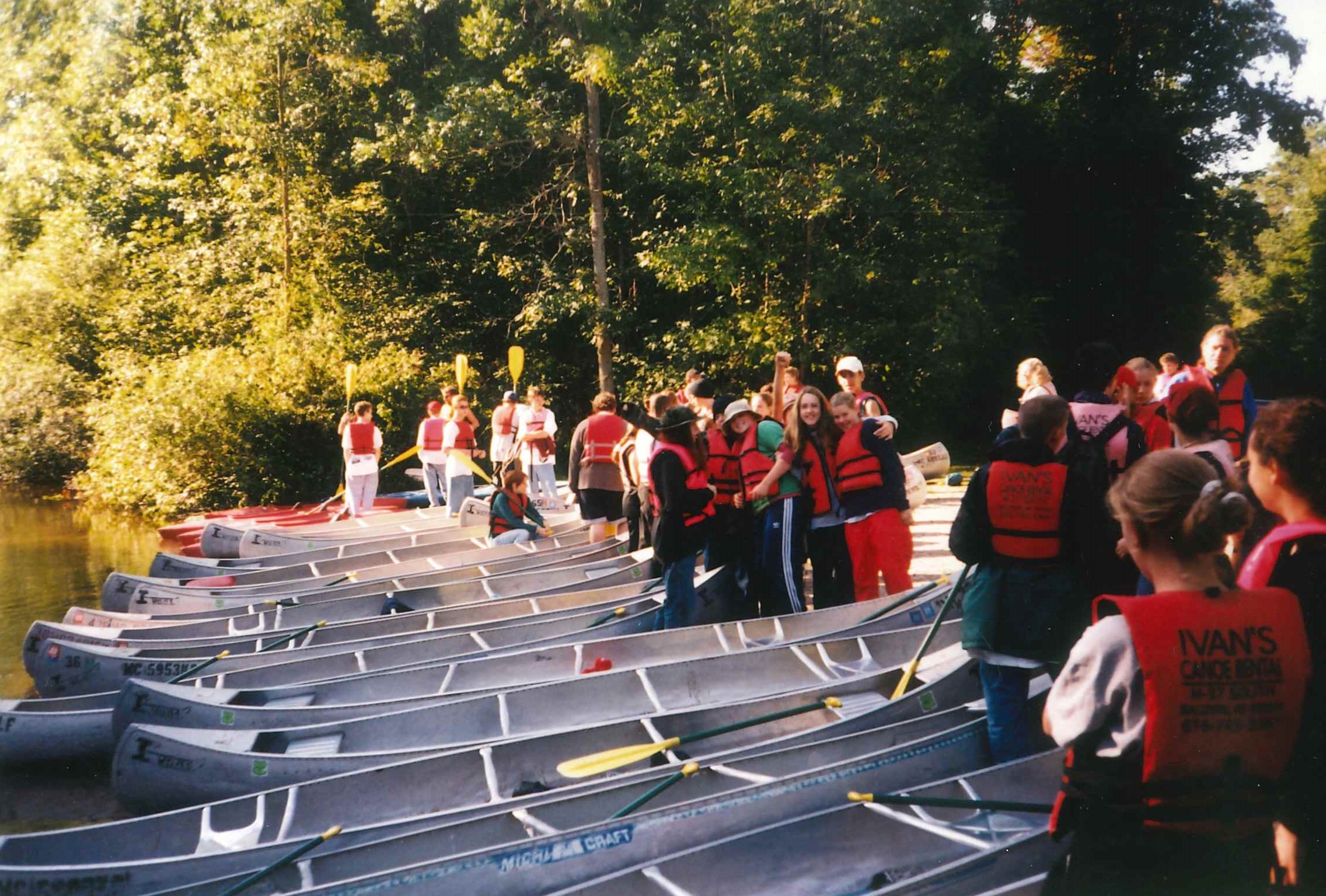
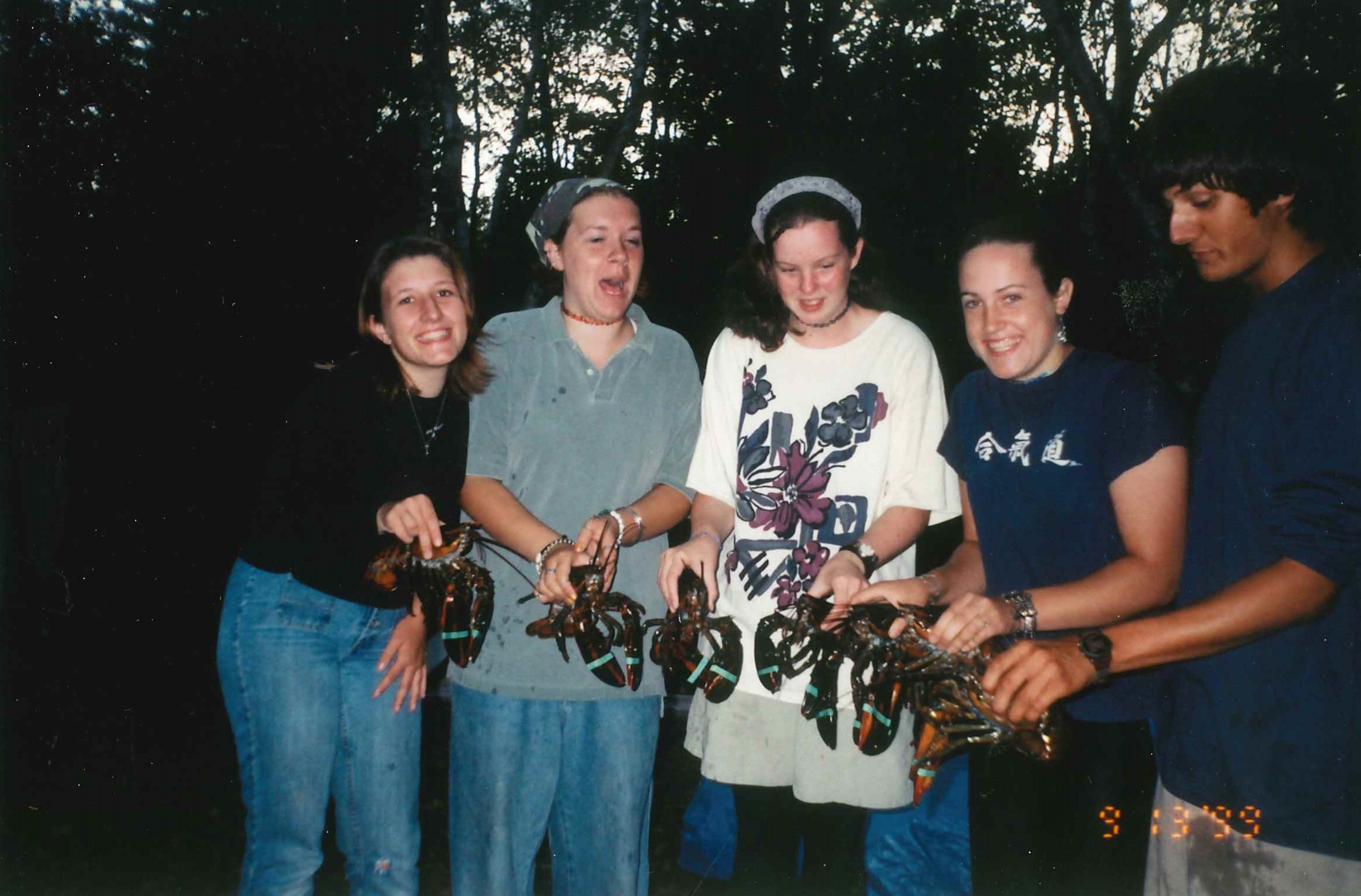
Is Travel Good For Teens?
Is it safe? Will they make good choices? What if something happens? Will they meet nice people?
These are just a few of the questions that might pop up when considering allowing your teen to travel - and they're all valid and worthy of discussion. But a question that might be even more important is, what will they learn? For parents, the educational aspect of travel is most likely the biggest reason why they send their kids on an overseas educational program with their school, like our senior trip to Italy. But what about travel with non-school groups - or even solo travel - for teens?

Traveling is the moment when the textbook comes alive, when everyday objects look completely different and when common greetings sound exotic. For teens, traveling abroad is exhilarating, stimulating, frustrating and—whether they're looking for it or not—extremely educational. Experts say that the educational benefit for teens goes far beyond learning historical facts, architectural styles, conversational phrases and even a working knowledge of a foreign subway system. Travel is an excellent way for students to develop the vital skills like critical thinking and problem solving that will enable them to compete in an increasingly globally interdependent economy.
“I think the biggest thing travel does for teens is to help them to see beyond their own somewhat limited world and to see how other people live,” says Christine Schelhas-Miller, who taught adolescent development at Cornell University for many years and is the co-author of Don’t Tell Me What to Do, Just Send Money: The Essential Parenting Guide to the College Years.
Travel is particularly good for developing critical thinking as it forces teens to examine their own values and beliefs from the perspective of a different culture. They become aware of aspects of their lives that they have taken for granted and never examined. - Christine Schelhas-Miller
Improvement in critical-thinking skills can translate into big gains in the classroom. Travel can help students develop all of what educators call the 4 Cs (critical thinking and problem solving, communication, collaboration, and creativity and innovation), says Dr. Jessie Voigts, who has a PhD in international education and runs wanderingeducators.com, a global community of educators sharing travel experiences.
“Travel encourages critical thinking (especially when comparing intercultural differences), problem solving (in so many ways—money, transportation, food, events, cultures, languages, etc.) and communication (both verbal and non-verbal, which is key to any communication event, globally),” says Voigts, author of Bringing the World Home: A Resource Guide to Raising Intercultural Kids. "It also encourages collaboration (working together with your travel partners or locals to fulfill your basic needs), creativity (finding a creative solution to a travel problem) and innovation (whether it’s a way to hold your luggage together with whatever is on hand or finding a new route in an unfamiliar town past a parade to get where you need to go).” And, through these experiences, teens are becoming more flexible and adaptable along the way, two more skills that are essential in the 21st Century’s virtual workplace.
Our kids face an entirely different world than that of their parents and grandparents. They need more than school and college to get a job. They need to learn flexibility, adaptability, and other skills to succeed in today’s global economy. Our coworkers and neighbors are no longer just next door, but all around the world.
Traveling—not just being a tourist, but smart travel—helps teens learn flexibility and adaptability, and creates an open-minded worldview that allows teens to work well with others anywhere in the world.” - Dr. Jessie Voigts
It may take teens—and their parents—some time to realize that they have gained all of these skills from their travels abroad. But it probably won’t take anyone long to figure out that these teens have learned a lot about something very close to home: themselves. Unexpected events always happen to travelers and, when faced with these events without an adult to guide them, teens develop problem-solving skills and confidence in their abilities to manage their lives. When teens travel, they expect to learn so much about the other country, but may also make some important self-discoveries along the way.

Some Life Benefits of Traveling as a Teenager:
- Learn How to Save and Budget Money - Sure, learning about money starts at a young age, but there is real-life experience and deferred gratification in saving up all school year for an extended trip that a teen can proudly say that they paid for. Plus there's the skill of budgeting throughout the trip.
- Ability to Make an Itinerary - Itineraries are just as dynamic as the places visited and this will reflect upon your teens travels no matter where they venture. They'll build flexibility when they need to make and change their itinerary so they can have the best experience possible.
- Build Problem-solving Skills - World travel wouldn’t be complete without the occasional bump in the road. Dealing with problems like pouring rain when the forecast predicted sun or a broken suitcase zipper will make them a savvy problem-solver as they work through predicaments proactively and positively rather than allowing them to spoil the trip.
- Become an Independent and Responsible Young Person - When traveling around with family and friends, it’s super easy to follow their lead and let others take care of things like tickets, transportation, meals, itineraries, etc. – The list goes on and on. Traveling without the familiarity of people from home means your teen will need to take more responsibility for their own actions, as well as look out for those they are with. This means showing up prepared, making the effort to participate, and being accountable throughout the trip.
- Break Stereotypes and Experience New Cultures - Unfortunately, people are often quick to believe stereotypes about other countries and their cultures, especially the negative ones. This is true of Americans' views of overseas destinations, as well as other countries negative perceptions of Americans. When traveling, your teen will have the opportunity to break this cycle by keeping an open mind and an open heart and sharing everything that it means to be a global citizen.
While every family and every teen is unique, when it comes to travel it's possible the pros outweigh any cons. Traveling teaches meaningful life skills, provides an opportunity to meet new people, facilitates cultural appreciation, and teaches the ability to adapt to new environments. Travel is a fantastic way of gaining these unique experiences which develop youth into more well-rounded citizens, all while having fun along the way!
International High School Students Find a Community at RSSAA
 Motivated students and families from around the world look for immersive experiences at American high schools where they can learn English, absorb American culture, and prepare for post-secondary education at English-speaking institutions. As the Waldorf movement continues to grow around the world, some international parents are looking for a Waldorf high school experience when their own country doesn’t have a program established. At the same time, there are international families who have never known about Waldorf education, but appreciate the liberal arts curriculum, community feeling, and host-family experience the Rudolf Steiner High School offers. Over the past 18 years, 75 international students have found their way to Steiner High school and have emerged with skills and relationships that have prepared them for their next steps in life.
Motivated students and families from around the world look for immersive experiences at American high schools where they can learn English, absorb American culture, and prepare for post-secondary education at English-speaking institutions. As the Waldorf movement continues to grow around the world, some international parents are looking for a Waldorf high school experience when their own country doesn’t have a program established. At the same time, there are international families who have never known about Waldorf education, but appreciate the liberal arts curriculum, community feeling, and host-family experience the Rudolf Steiner High School offers. Over the past 18 years, 75 international students have found their way to Steiner High school and have emerged with skills and relationships that have prepared them for their next steps in life.
Mary Zeng (’21) deeply appreciates her experience here. What was important to her, and her family, was to find a school that assisted her learning English along with broad academic coursework. Thanks to our smaller classes, she was able to form supportive relationships with her teachers that continue today. Her immersion in American culture with a Rudolf Steiner School of Ann Arbor high school family both dramatically increased her acquisition of English and gave her a caring environment to navigate her high school years. She sees the relationships she built with classmates, her host family, and the wider Ann Arbor community, as her home-base in America as she attends University of Massachusetts - Amherst.
When Vivian Wang’s (’17) parents were trying to find an American high school for her to attend, they were looking for a good experience both with an English-speaking family - so she could learn the language and culture - and an academic setting that appreciated both the sciences and the arts. Vivian’s host family had a 1-year-old child and they loved getting to know Vivian and  helping her study for classes and learn English. She continues to stay in touch with them and they even helped her move to Atlanta to attend Georgia Tech. Vivian also appreciated the strong relationships she had with her teachers, where she was encouraged to ask questions and be proactive in her learning.
helping her study for classes and learn English. She continues to stay in touch with them and they even helped her move to Atlanta to attend Georgia Tech. Vivian also appreciated the strong relationships she had with her teachers, where she was encouraged to ask questions and be proactive in her learning.
For Irene Zhang (’21), two of the reasons she came to RSSAA were to continue studying at a place that was more artistically oriented, and finding a home-life experience in a city that was safe. In Ann Arbor, she lived with a Chinese-American family who had small children and she had a marvelous experience. She became a part of their family, and they treasured the opportunity to learn from her. She looks forward to visiting them during breaks from her studies at Tufts University.
The host-family experience is just as rewarding as the educational. For many, the international student becomes a part of the family, participating in their customs, meals, and celebrations. Irene’s host mother, Bing Li, found the hosting experience wonderful for her family with two young children. During the pandemic, they got to spend even more time with Irene and she truly became part of their family. High school families enjoy a peer-to-peer experience that can enhance the high school years for their own student as well as their guest student. Some past host families are looking forward to hosting another international student when the opportunity arises.
The city of Ann Arbor is attractive to many international students because of its safety, a large international community (especially for Asian students) and being within the vicinity of the University of Michigan. For a teenager, Ann Arbor provided 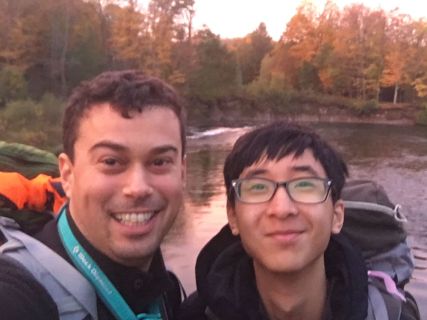 outlets beyond school to connect with others. Mary took tennis lessons at a local club and explored the various teen locales in the region. Irene attended UM football games with friends and immersed herself in artistic experiences. Learning soccer was exciting for Vivian, and she found the coach very helpful and her teammates welcoming. Students also can participate in a variety of after-school clubs, like Model United Nations, that connect them in new ways to their American classmates.
outlets beyond school to connect with others. Mary took tennis lessons at a local club and explored the various teen locales in the region. Irene attended UM football games with friends and immersed herself in artistic experiences. Learning soccer was exciting for Vivian, and she found the coach very helpful and her teammates welcoming. Students also can participate in a variety of after-school clubs, like Model United Nations, that connect them in new ways to their American classmates.
International students at RSSAA also form bonds with each other as they take English as a Second Language (ESL) classes, led by skilled ESL teachers who become a reliable support-system to complete their academic coursework. For some students, these teachers become a sounding-board for other questions or concerns they have during the school year.
Our international students have found a well-balanced program at RSSAA that brings the warmth of a family experience while undertaking an American high school education. For international students and host families alike, an impactful, life-changing experience can happen, and relationships are created that can continue years after graduation!
If you're interested in learning more about how you can help create an amazing experience for an international student, please reach out to Sian Owen-Cruise at sowen-cruise@steinerschool.org.
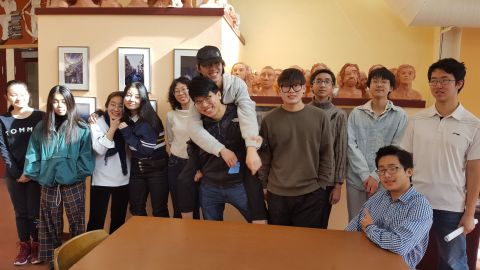
Our Return to Italy (Part 1)

Despite the trepidation we all felt in planning for this trip during the ongoing pandemic, after two years without it we felt more sure than ever about the value of this capstone experience to our senior students, and we charged ahead. It took many months to plan and we had multiple scares with the vagaries of the flight and tour schedules, the worry over possible loss of accommodations due to COVID, and the additional work of verifying and collecting vaccination information and ongoing COVID testing for all students and chaperones, but everything fell into place. Before departing, students had a week and a half of intense preparation where they learned in-depth history and the curriculum context of the places they would visit, as well as some Italian phrases. They also had some time to practice live sketching. The careful planning of the trip - both curricularly and logistically - paved the way for a smooth and enriching experience for all the students.
The trip was seven nights: three in Venice, two in Florence, and two in Rome. Students visited important art and historical sites and were required to capture their trip via drawings and written reflections in their sketchbooks.
Upon their return, each student highlighted a meaningful Italy moment during an all-school assembly, including:
- Being outside of the USA for the first time and experiencing all the differences and surprises
- Going on group night walks in Venice and seeing the difference between the busy day time and serene night time
- Experiencing St. Peters Basilica at the Vatican
- Seeing everything we learned in Art History class up close
- The many androgynous-looking statues beautifully displayed in The Uffizi
- Climbing up the Campanile (belltower) in Florence and seeing how beautiful the city looks
- Walking in the footsteps of the many great artists we learned about in school
- Seeing Botticelli’s The Birth of Venus in real life
- Touring the Roman Forum with our guide, Francesca, and reliving ancient Rome
- The restaurants, convents, and hotels where our school has long standing relationships
We are thrilled that the students were able to have these experiences after the disappointment of the canceled trips in 2020 and 2021. The Italy trip, like all of our school trips, is an opportunity for growth unlike what most students have in their day-to-day classes and extracurricular activities. Our class of 2022 students jumped at the chance to experience another culture, to see different ways of conducting daily life, and to consider a different, and much longer, sense of time through the history around them. Our wish is that they continue to lean in to the curiosity they have developed in high school so that they can keep learning and growing.
Join us for an in-depth look at the trip itself in our next Look A Little Deeper blog post!
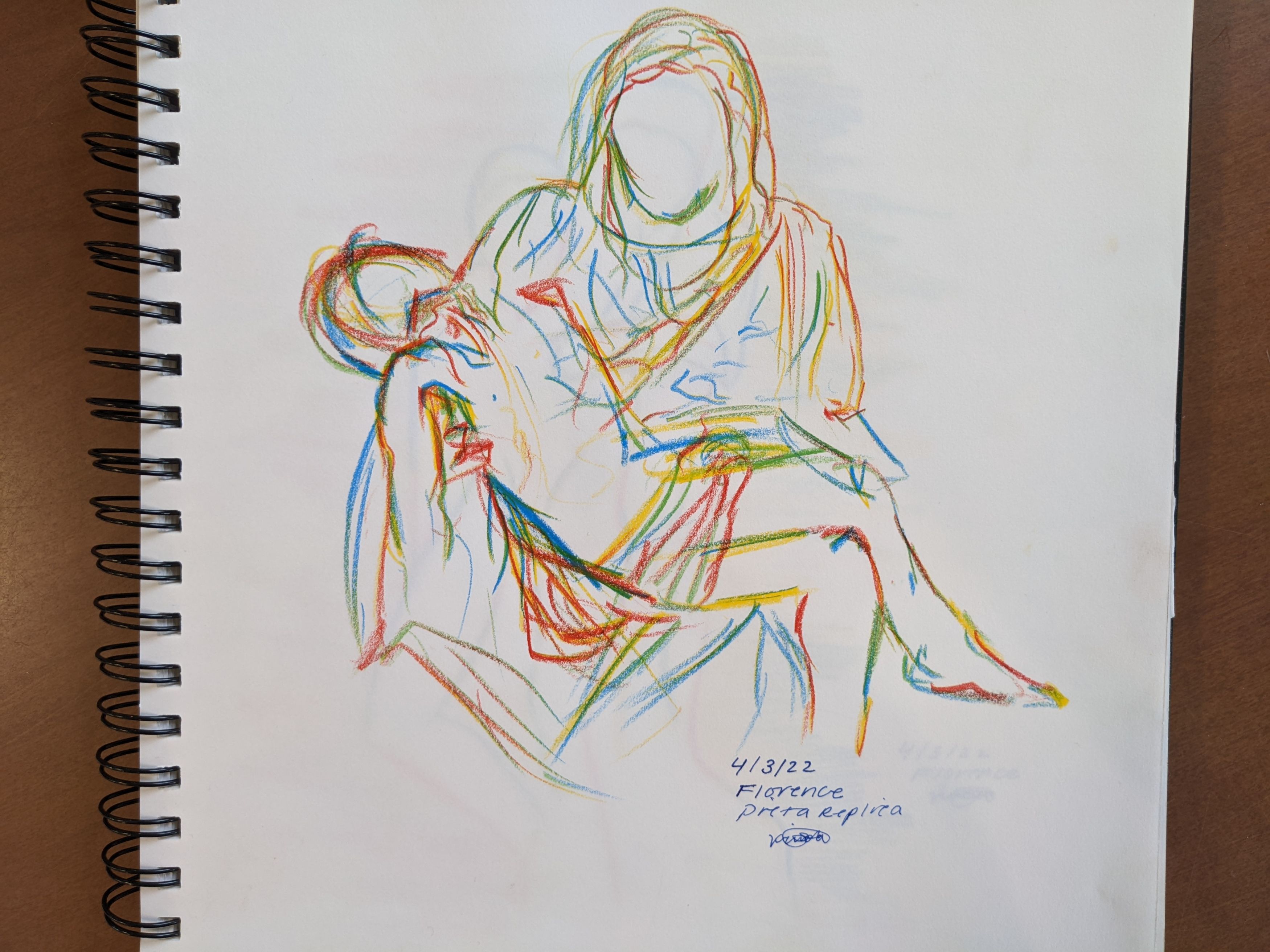
More Than a Body: Capturing the Essence of Another Human
When Elizaveta McFall (HS Art faculty, parent & HS Alum ‘04) began teaching the HS figure-drawing class over four years ago, she
Elizaveta saw an opportunity to re-imagine the approach to this tradition by establishing a dialogue and relationship with the models themselves. She wanted her students to fall in love with people and to see them as art. From her perspective, it is easy to learn the proportions of the human body, but the real work is to capture the model as they are.
She wanted her students to fall in love with people and to see them as art.
In the past, only one model would visit the classroom over a period of several weeks. Now there was an opportunity to open that experience up by inviting multiple models to pose on different days, giving the students a chance to see a variety of human bodies. Her models have evolved from “accepted” male and female body-types to now include a variety of bodies, sizes, gender, and age. This year, she invited a professional wheelchair basketball player who entered the class on his prosthetic legs, talked with the class, then removed his legs and posed for the students in his athletic wheelchair.
Elizaveta wanted to integrate social-emotional learning into the students experience by establishing a relationship with the models during their session. She creates an environment for the models and students to have a conversation. Before the model visits, the students talk about how the model might feel when they arrive - vulnerable, uncomfortable, or nervous. She asks students how do we make them comfortable? Should we giggle (even if it’s not about the model)? Should we ask questions and what kinds of questions? She prepares them to think about “nude” as a genre in art and to look at the model as nude - not naked. Students work through how those terms make them feel.
Before the model visits, the students talk about how the model might feel when they arrive - vulnerable, uncomfortable, or nervous.
Through earlier conversations with the models, Elizaveta learns about their lives, hobbies, jobs or interests. She asks them to think about the shape of their bodies and learns what they are comfortable talking about. This information is then integrated into her class, so she can model the conversation for students, who then begin to pick-up on her approach.
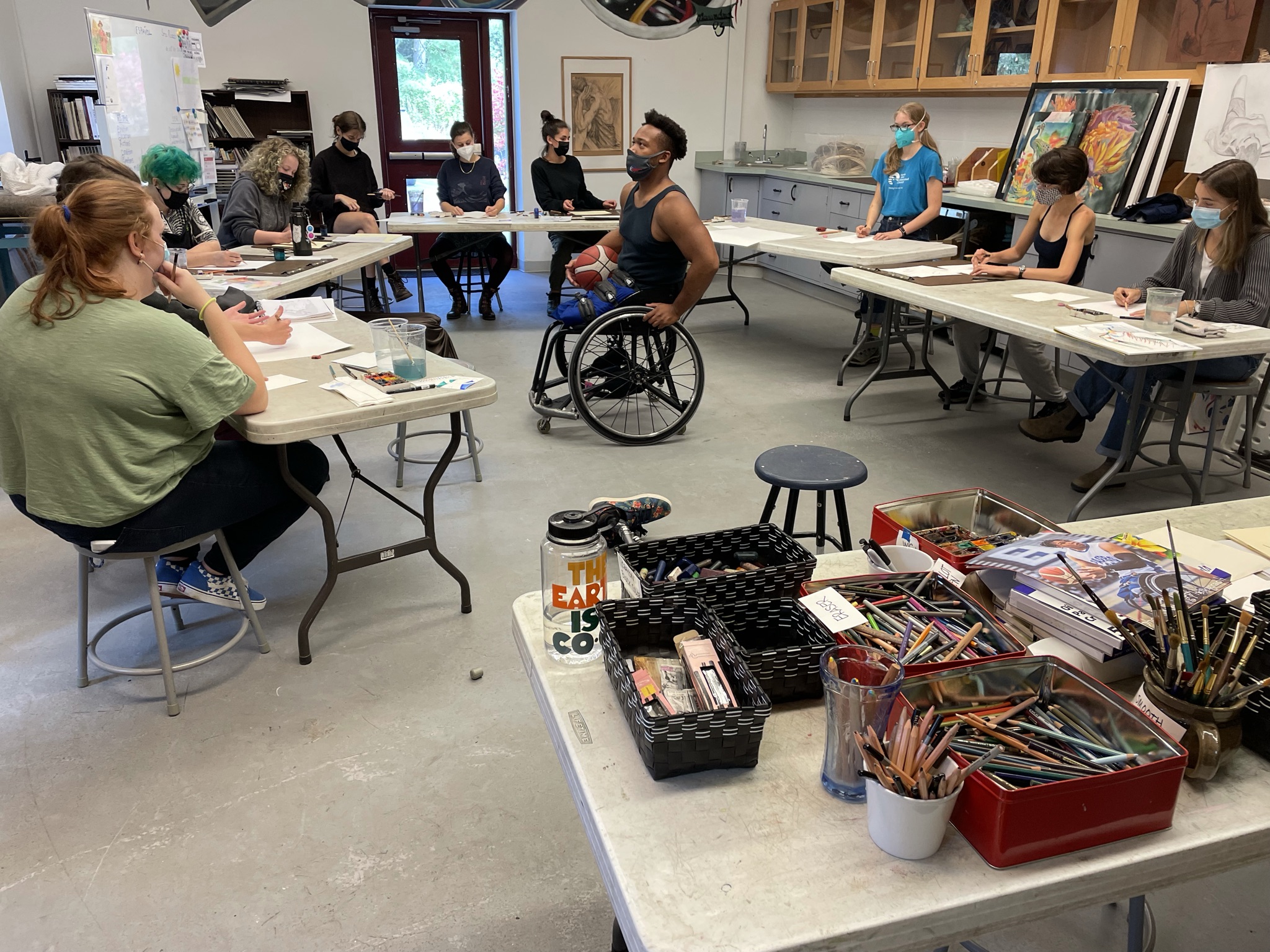
Once the model is back in the room, a comfortable rapport builds as Elizaveta demonstrates for students the questions to ask the models. Nikki, a plus-sized model, is asked about her journey of loving her curvy body. Elizaveta asks the students, “Does Nikki want large paper or small? Do we use straight lines or curved? Where is she most narrow or where is she most broad? What ways can we capture Nikki’s curves?”. It becomes clear that their bodies are aspects of who they are. A trans male model is not introduced by this title but through Elizaveta’s questions, they reveal a favorite part of their transformed body. The conversation with Zeus, a professional wheelchair athlete, reveals how he functions in the sport and how he uses his prosthetics to walk. A pregnant model talks about the temporary body she wears, where she gained weight and the purpose of those changes for the baby.
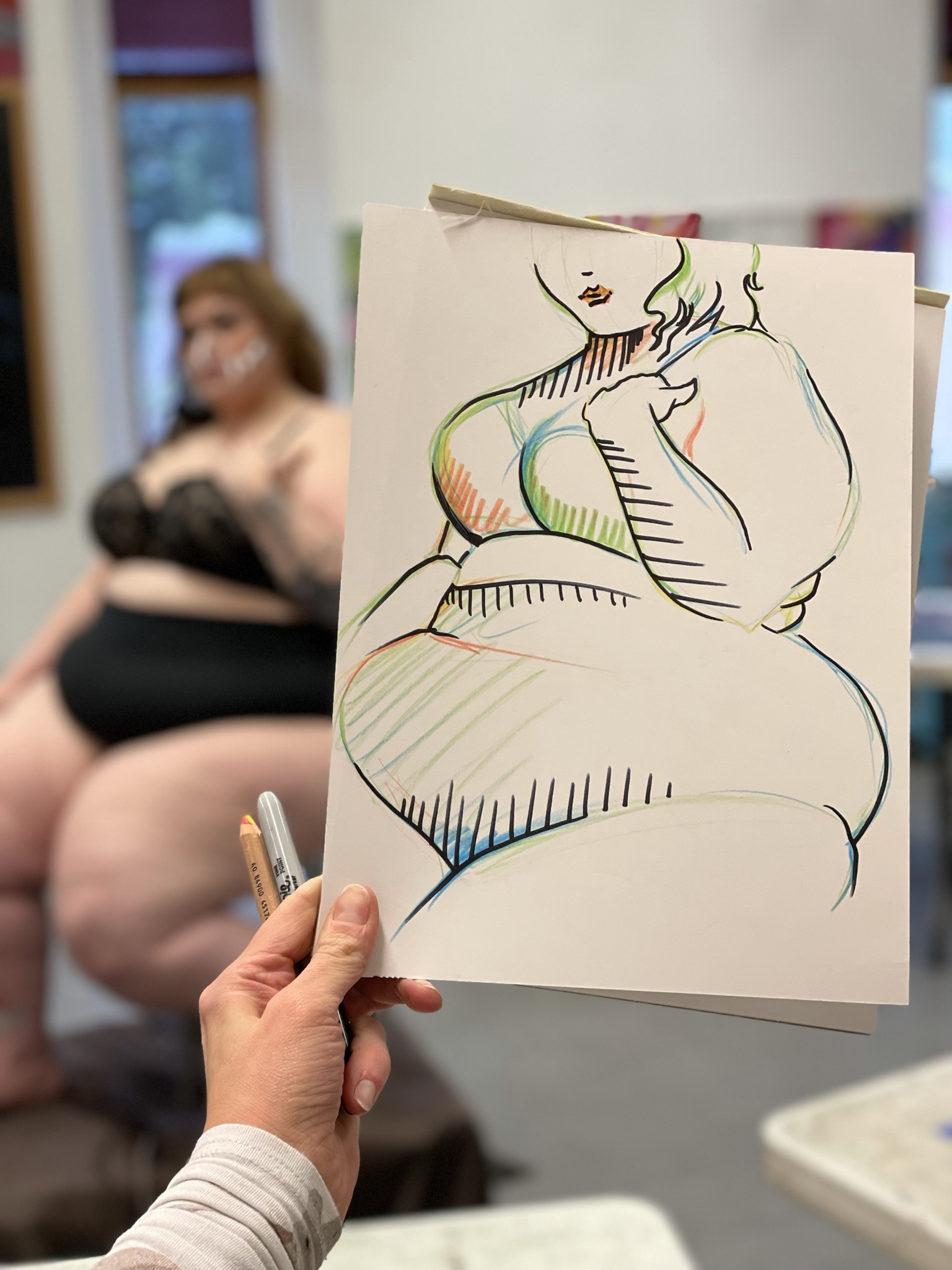
For students, seeing a body like their own or talking with a trans person or someone with a disability who have fully fallen in love with themselves can be a very powerful experience. Student interests are diverse - from the hard sciences, computers, history, or fine arts - but every high school senior participates in the figure drawing class and is given the opportunity to appreciate the beauty in the diversity of human bodies and interact with the amazing people who inhabit them. Elizaveta knew this new approach would be a unique experience, and the greater impact it would have on our students social-emotional skills and opportunities for growth beyond artistic abilities.
For students, seeing a body like their own or talking with a trans person or someone with a disability who have fully fallen in love with themselves can be a very powerful experience.
Talking With our Littlest Students About Race
Adapted from Acorn Hill Waldorf Kindergarten
Children are constantly picking up on what is OK to talk about, what is off limits, and how adults react to the topic. Here's how to begin or continue a discussion about race with your child.
Like many other topics, race can be challenging for adults to discuss among themselves, let alone with their children. But while open dialogue about race is limited in our society, that doesn't mean you can't make decisions and set the tone for discussions about race in your home. Talking with young children about race is an opportunity - one you may or may not have experienced when you were growing up.
Some well-meaning parents feel if they do not address the topic of race, their children will be "color-blind." But the reality is that race does have meaning in our society. Your conversations with your child will depend on your own racial identity, the racial make-up of your family (immediate and extended), and your values regarding race—both those you express and those you imply.
Like other crucial conversations you might be beginning to have with your child right now, race discussions should start early and evolve as your child grows.
What They Understand
 Kids under 24 months do not understand the adult meaning of race: the historical implications of it or how the history and current meaning of race affects our society, but babies and toddlers are beginning to notice differences in appearance. It might be that the child simply looks longer at or perhaps points to a person who looks different from the people she's most used to seeing in her everyday routines. During these moments, the child looks primarily to the adult to gauge their own interest and reaction—toddlers this young are still reliant on their parents' opinions and actions to shape their own. This goes without saying, but how you act around and discuss people from your own culture and other cultures is what your child will first consider appropriate. Toddlers internalize the beliefs of their family and immediate society, a process that will continue throughout their development.
Kids under 24 months do not understand the adult meaning of race: the historical implications of it or how the history and current meaning of race affects our society, but babies and toddlers are beginning to notice differences in appearance. It might be that the child simply looks longer at or perhaps points to a person who looks different from the people she's most used to seeing in her everyday routines. During these moments, the child looks primarily to the adult to gauge their own interest and reaction—toddlers this young are still reliant on their parents' opinions and actions to shape their own. This goes without saying, but how you act around and discuss people from your own culture and other cultures is what your child will first consider appropriate. Toddlers internalize the beliefs of their family and immediate society, a process that will continue throughout their development.
As the children grow, so does their awareness and their misconceptions about race. Studies have shown that by three years old, children are choosing playmates by race and by ages 4-6 their racial prejudices peak. By ages 5 and 6, children are already holding many of the viewpoints that the adults around them have on race. Not speaking to them about the topic means that they are making their own assumptions, and forming their own biases
What to Say
Say something! Your child's understanding of race begins both with what you will talk about and what you do not discuss. Children learn that when they ask a question about someone's race and they are shushed, it's not something they can discuss and is therefore taboo. Talking about race normalizes the topic and makes it less scary for kids.
As any parent who's caught their toddler staring at someone in the checkout aisle or pointing to a passerby in the mall will tell you, racial observations may be embarrassing. It really is important, though, for you to address your child's observations and take that moment to acknowledge the differences they are taking note of.
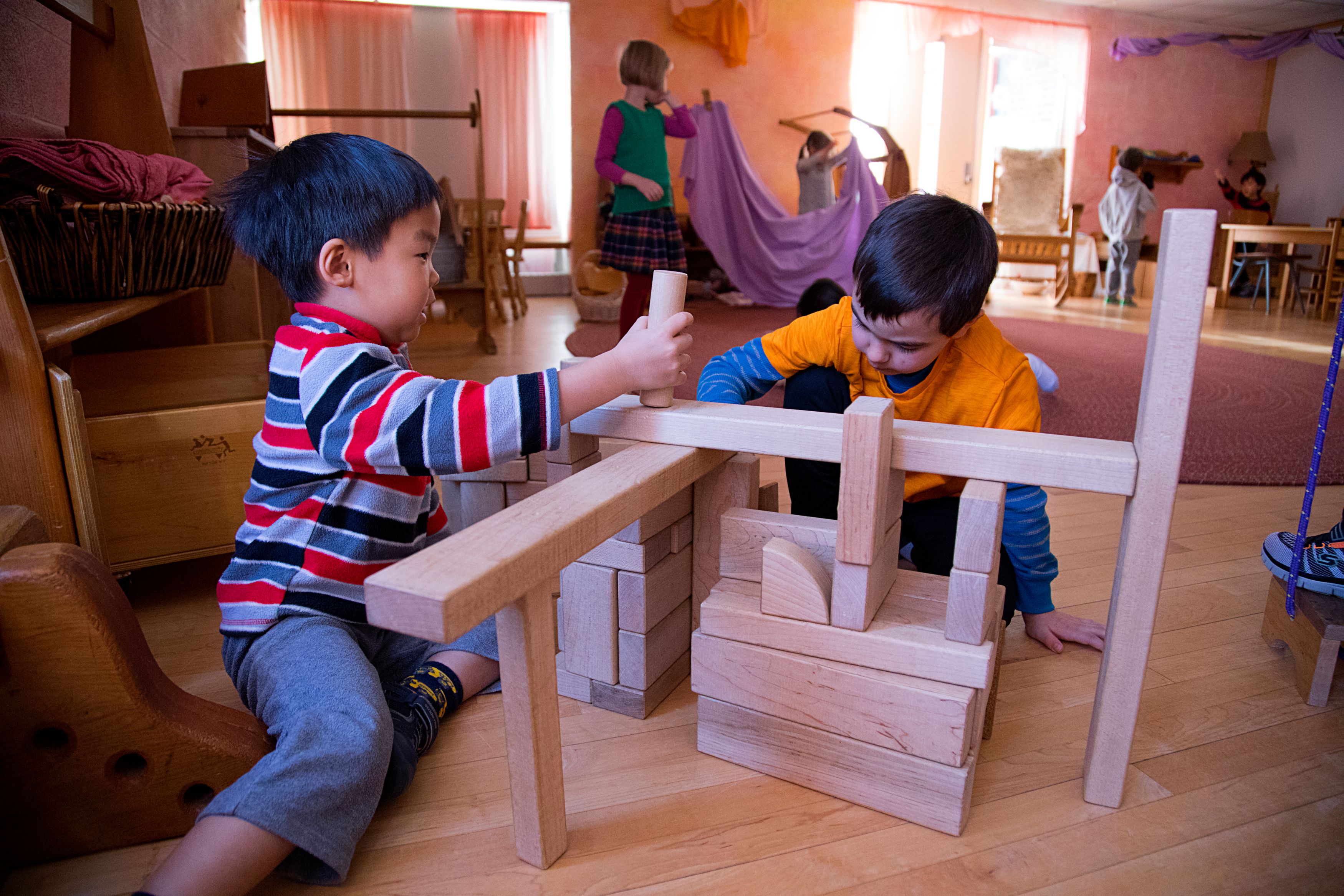 When your child points out (or later asks questions about) people with different skin color than his, address it. For example, if your child is white and asks why an African-American child's skin is brown, explain, "Grownups and kids have all different skin colors. Some have tan and some have brown." When possible, use accurate ethnicity language with your child: "She is white (or Caucasian)/African American (or black)/Latinx (or Hispanic)/Asian-American," etc.
When your child points out (or later asks questions about) people with different skin color than his, address it. For example, if your child is white and asks why an African-American child's skin is brown, explain, "Grownups and kids have all different skin colors. Some have tan and some have brown." When possible, use accurate ethnicity language with your child: "She is white (or Caucasian)/African American (or black)/Latinx (or Hispanic)/Asian-American," etc.
Though toddlers likely won't ask questions about race, children in preschool or grade school will have the vocabulary to articulate observations. Your child might ask why a person has skin a different color or hair a different texture than his. When he does make an observation or inquire about a race, answer the question and give correct information, which may mean doing some homework yourself. Think about and take responsibility for the stereotypes and assumptions we all have about race.
These are some basic ways you can prepare for a lifetime of conversations with your child about ethnicity and diversity
Self-reflect. Take some time and think about your own racial identity, the assumptions you hold, and what lessons you would like to teach your children about race. Talking with friends, family, and other parents can be really helpful. Look for other parents who are interested in open dialogue about race in their families. Talking with other adults will also give you clarity and increase your comfort level when answering questions if this is a challenge for you. Remember, this is often a scary process for adults. Understanding and challenging that fear will be helpful in conversations in your family.
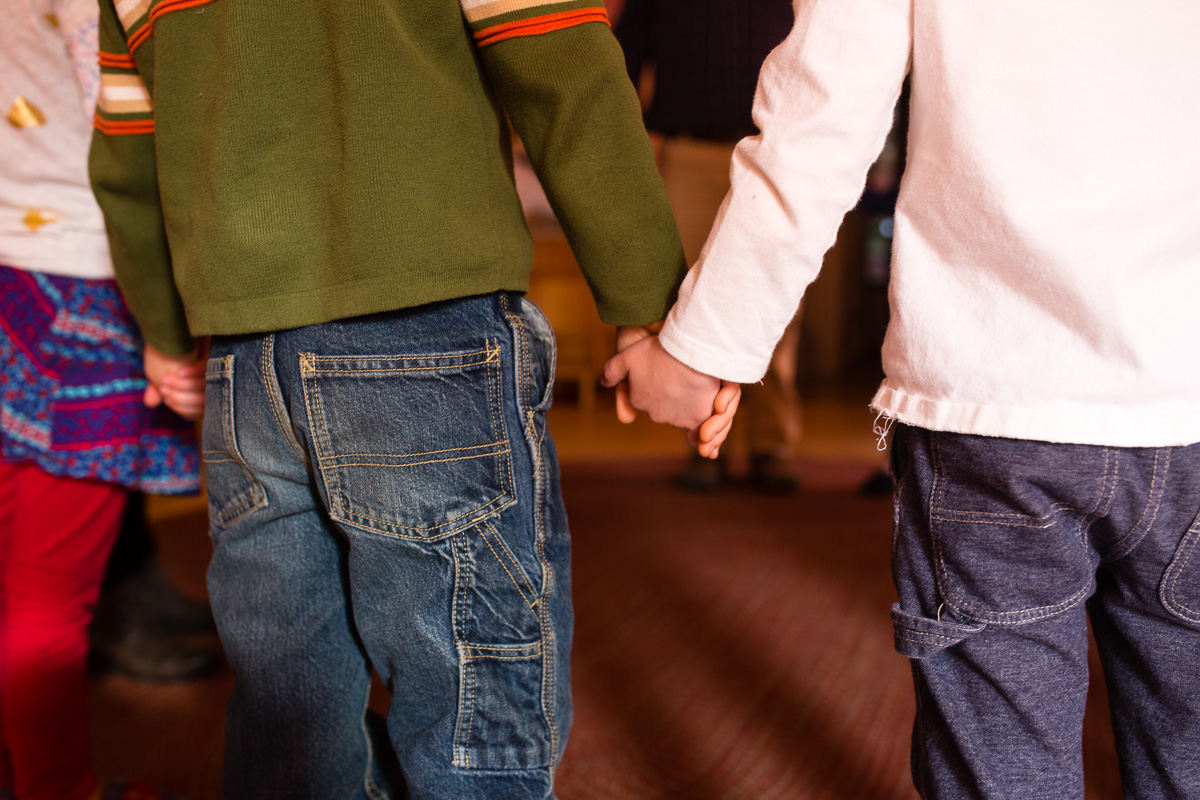 Don't avoid the topic. Particularly in white families, some parents decide to not discuss racial differences. This reinforces that it is a taboo subject for your children. When you have had early conversations about appearances, for example, as your child gets older, you can also begin discussions about racism.
Don't avoid the topic. Particularly in white families, some parents decide to not discuss racial differences. This reinforces that it is a taboo subject for your children. When you have had early conversations about appearances, for example, as your child gets older, you can also begin discussions about racism.
Work on Empathy. Developing empathy comes from knowing your own feelings and beginning to understand feelings in others. How you interact with other people and respond to situations works on shaping that within your child. It may seem small and simple, but it is laying the foundation for how they treat, advocate for and think of others. Here are some Teaching Empathy Tips.
Look at your environment. Self-reflecting also means taking inventory of the images, stories and people that your child sees on a daily basis. Looking at your child’s toys, books, media influences, family, friends and neighborhood/community allows you to see areas for growth or conversation.
Read Books. Books are wonderful because they serve as windows into another’s world, reflections into your own, and give children the ability to connect with others. They also serve as good talking points for bringing up discussions about differences, injustice, and provide ways to celebrate and normalize diversity. Our Early Childhood Library offers a great selection of titles.

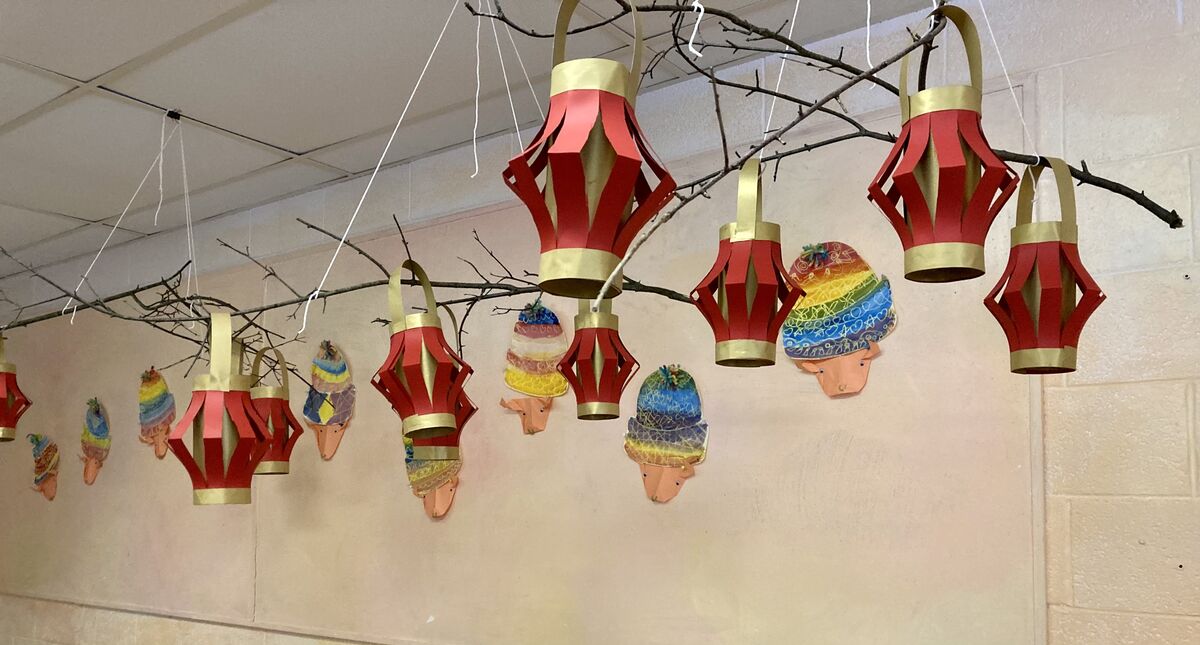

Social & Emotional Heath

Social and emotional skills are vital for a child’s future, and in young children those skills are undergoing great expansion. The child lives in the present moment and in a world of wonder which can make social and behavioral obstacles challenging. Wonderful opportunities present themselves during the child’s time in the classroom and at home, and adults can help support learning while meeting the child at the developmental stage that he or she is in. This topic is at the heart of Waldorf education.
Parents often ask us about strategies and helpful approaches to navigating discipline and conflict. One of the most important aspects that we consider is how the child views him or herself and others.
It is easy to categorize things into good and bad, right and wrong; but human interactions and social relationships are much more complex than that.
Every human being has experienced times in which they have been unkind, insensitive or hurtful. It is in remembering these times and seeing the other person as a striving human being, that we can work through conflict and develop empathy for others. The last thing that we want is a child to begin to feel as though they are a bad person and unworthy of our love and care. One of the things we aim to foster is an environment of inclusivity and seeing others as equally important and valuable.
Each child enters a class with his or her own wonderful gifts and challenges and grows tremendously from what each classmate brings to the group. The world of play offers a child a stage to try on many hats which may manifest in various emotions, behaviors and roles. Children will often work out some social questions and conflicts that they are trying to comprehend through their play. Through observing children's play, adults are given a window into things the child is trying to figure out, which are often questions of morality. 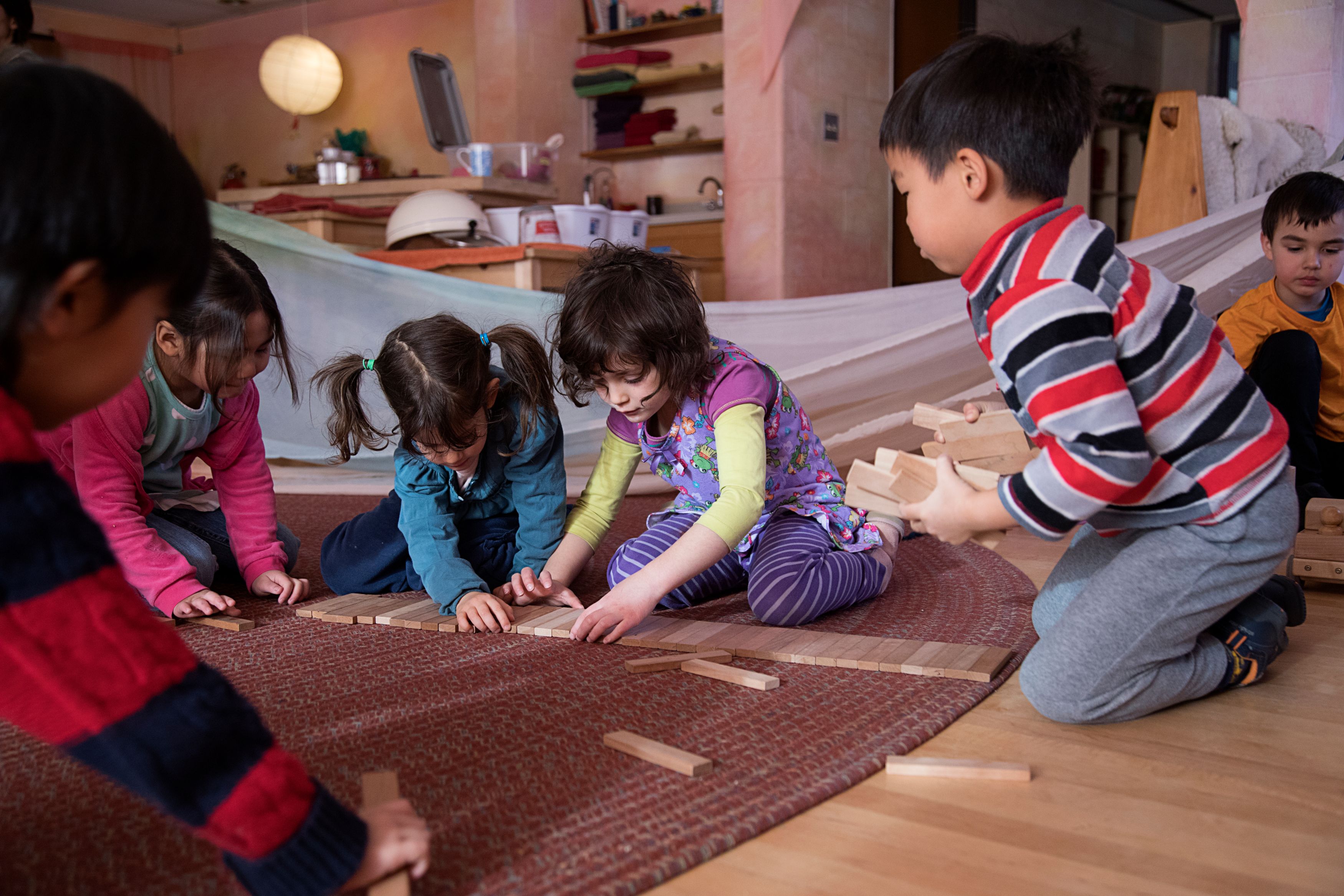
At RSSAA, children are encouraged to work challenges out first on their own to help them develop the foundation of lifelong communication and social skills. This is all done in the safety of a well-prepared and cared for classroom environment. The teacher works hard to maintain this environment while supporting the children in the class and the joys and struggles that they will experience together. At home, it is the same. The environment of family and the values that are set for how to treat one another allow the child a safe place to grow. Sibling interactions can sometimes be extremely difficult, but also tremendously rewarding. The same holds true for the interactions in the classroom.
The adult’s tone is important and should be relaxed and practical, stating observations or asking a needed question.
Approaching conflict without judgement can be one of the most difficult things for adults to do, especially when they clearly see a child do something unkind or hurtful. However, we have found that this is key to creating a space for growth to happen. By observing or sportscasting what you saw, without tones of judgement, a child can feel less defensive and better able to reveal the reasons behind their struggle. This can help take them out of the feelings of fight or flight and into a realm of learning and reflection. By speaking without judgement and describing another’s perspective of what happened, the children start to be able to see another person’s perspective, which in turn develops empathy.
Possible active observer statements:
I saw that Sally had it and Jim grabbed it
I have not heard you ask him for it
I see that Julie has many rocks and Jerry does not have any
Possible prompts:
You may ask him for a turn when he is done
You may talk to her first about that
When we have our coats on, we can go outside to play
When we are sitting and everyone is ready, we will pass the snack
Redirecting and engagement are great tools.
When situations are emotional, sometimes some breathing space and a shift of focus can make a world of difference. Redirecting the focus to a different activity with a child can shift the focus to practical work and engagement. Once the child is ready, the adult can invite other children to join. Often good work can bring two children together with a purposeful task and hard feelings start to dissolve. This could be all that was needed at the time to move past what happened, while other times the child may need this time to come to peace before bringing the conflict up in a way that they can talk about it. As the evening winds down it is easy to recap the day, acknowledging the areas you connected and the struggle that was had.
Acknowledging someone’s feelings can be powerful.
Whether a child is sad, angry or upset, stating that out loud gives the message to the child that you see that something is bothering them and can help them learn about identifying and coping with their emotions. Sometimes it is helpful to recognize the c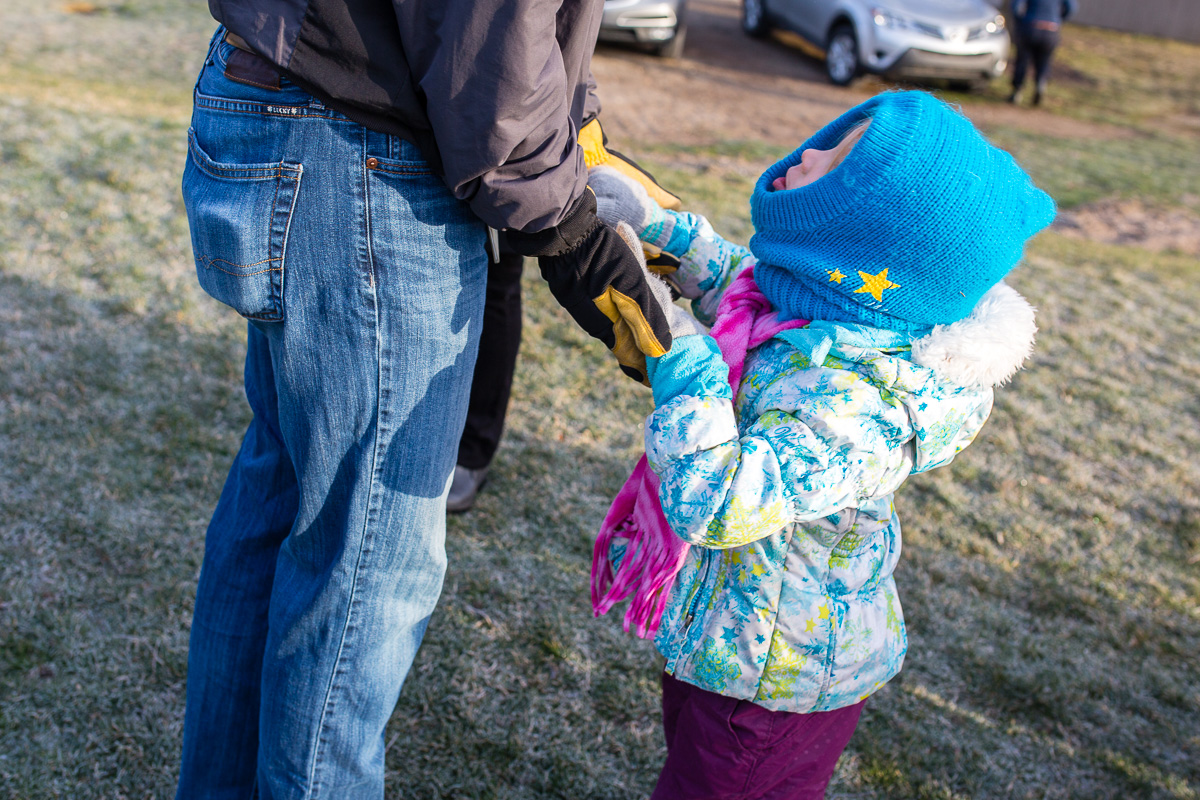 hild’s feelings simply before moving into practical ways to resolve the situation. An adult saying an acknowledging phrase helps the child feel connected to the adult or group. Here are some example phrases:
hild’s feelings simply before moving into practical ways to resolve the situation. An adult saying an acknowledging phrase helps the child feel connected to the adult or group. Here are some example phrases:
It looks like you are upset.
I’m sorry that happened.
That must have felt....
Reconnecting is key.
Showing that you care about a child in the moment of struggle lets them know that you still have a positive view of them and they are valuable. Reconnecting could be as simple as saying: “I know that you are such a kind and loving person. I remember how you found that beautiful rock the other day and brought it home for your brother. It’s okay to get mad, but we need to make sure no one gets hurt.”
Adults make mistakes too: let them see how you handle it!
It is important that the children can see that adults can make mistakes too, and that we are always trying to do our best. We work to be a model worthy of imitation, and that extends to our social interactions with the children and other adults. It is powerful for a child to see an adult make a mistake and then work to fix it, whether it be apologizing or having honest communication with someone.
It is ideal for the child to initiate resolution.
When children have a social conflict, it is ideal for the child to initiate resolution first. Ideally, they will grow the capacities and skills to navigate all the social and emotional struggles that will happen throughout their childhood and adult life. However, sometimes an adult is needed to help facilitate. This is one of the hardest things to get right. Once a teacher starts to see a pattern emerging then he/she moves towards more direct forms of interventions. Otherwise, simple redirection or a listening ear can be just the right tool. Not every moment needs to be talked about with an adult, and sometimes the children can come up with a compromise that is unfair in adult eyes but perfectly fair in theirs. Give them a minute (or a few) to try to figure things out, if it feels safe to do so.
Being accountable is an important thing to learn.
Taking accountability when someone does something wrong can be hard: no one wants to do something mean or wrong to those they love. Accountability without blame can be accomplished if we can help children to feel comfortable in a somewhat uncomfortable situation. Reminding in a firm but loving way that unkind words and actions can and do hurt. This can be truly recognized when the children can be brought together in a safe and productive way through meaningful activities.
Sometimes children need a break from one another in play.
S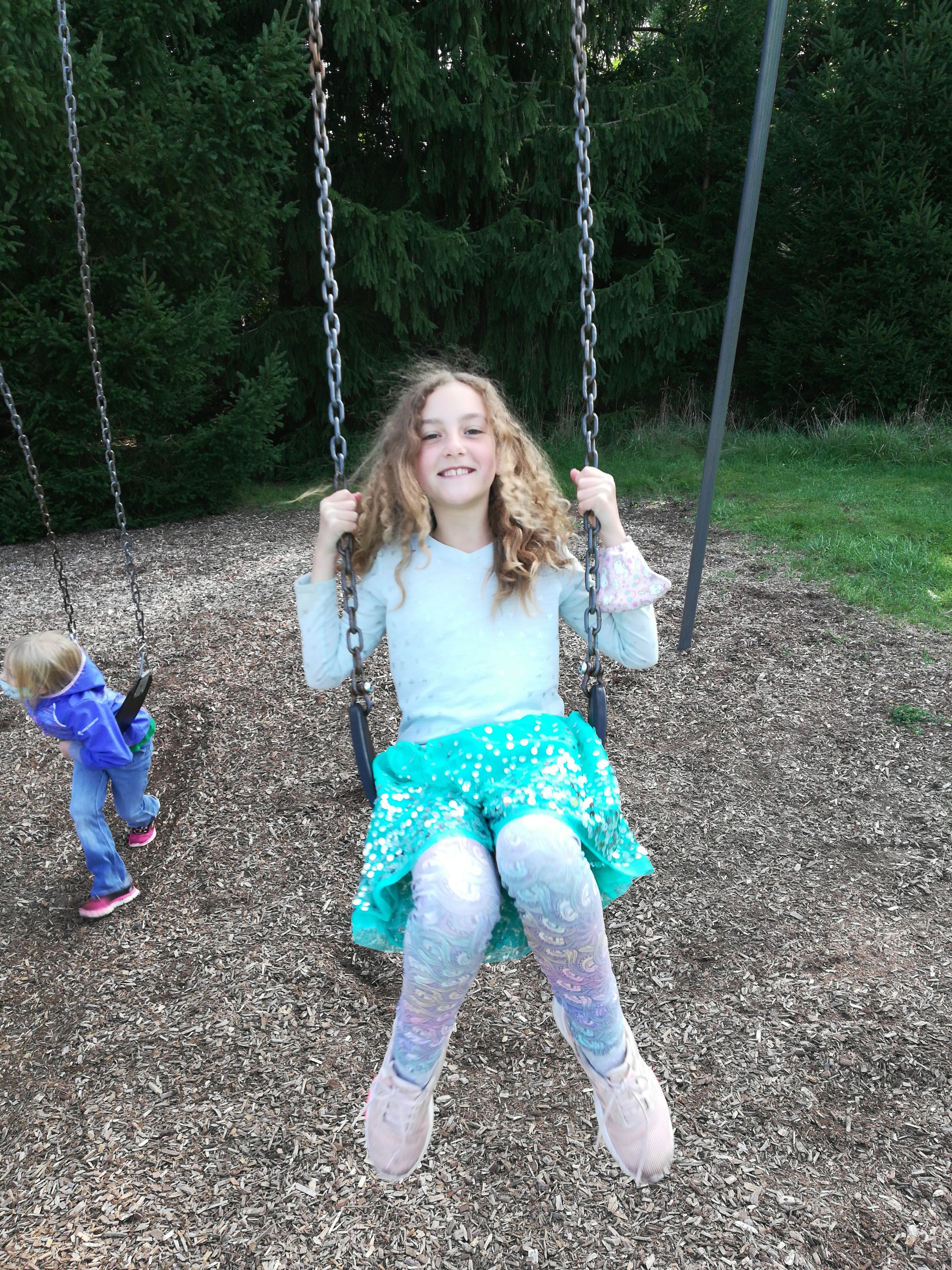 ometimes children can just be in a bad mood and that is okay. We can help their friends find other play options while giving the upset child room to have the quiet space they need to work things through. There are times that children can be purposefully exclusionary and in those situations we can say “We play with everyone”. Sometimes there are children at the stage where they can only play with one or two children at a time, and it's important that we help protect that space for them.
ometimes children can just be in a bad mood and that is okay. We can help their friends find other play options while giving the upset child room to have the quiet space they need to work things through. There are times that children can be purposefully exclusionary and in those situations we can say “We play with everyone”. Sometimes there are children at the stage where they can only play with one or two children at a time, and it's important that we help protect that space for them.
Therapeutic stories work wonders while bringing imagery to situations.
If a problem seems to be reoccurring or to have an underlying impulse, the teacher may decide to bring a therapeutic story to help the child move through the problem in an imaginative way without the child feeling the weight of his/her actions attached. Sometimes a story is told in the moment, where other times it is told to the group many days in a row or sent home with a child to be read before bedtime. This can be easily done at home. They can be stories of animals, little boys and girls or even stories of you as a child. Author Susan Perrow has an amazing collection of already written tales for various behaviors such as: grief, hitting, grumpy moods, or being shy.
An apology should not be forced.
Instead of forcing an apology that is not heartfelt, modeling caring behavior and inviting a child to participate in it can help facilitate healing between children. A child can help fetch a bandage or ice pack, or possibly rub the other child’s back or offer a hug. Depending on the situation, a teacher might give verbal prompts such as “Sometimes if I hurt someone by accident, I say ‘I am sorry, I didn’t mean to do hurt you. It was an accident.’” A child may choose to try a verbal apology or not, but either way the hurt child is helped by this.
Nourishing the physical body.
If a child gets a bump or bruise, a deep breath, a drink of water or bite of food can do wonders. Also, braiding or combing hair, applying lotion or a little massage can bring a child back into their body and help them feel well cared for. Possible tools we can use for comfort are: ice pack, essential oils, rescue remedy, cream, and a bandage.
Adult Reflection
It is important for the adult to later process and reflect on challenging situations in order to get a bigger sense of what happened and what is happening. Tracing the steps backwards to what lead to the issue can help the adult find the catalyst and that can help them avoid the situations in the future.


If you want to learn more about the Metaverse Development, please read our blog